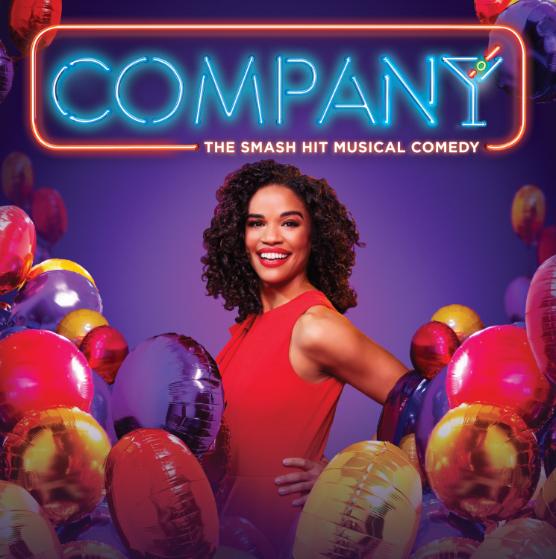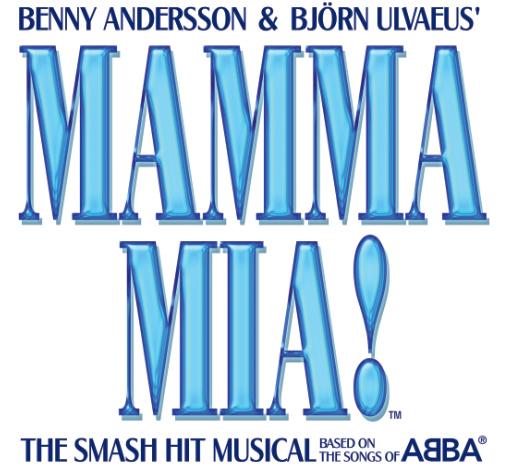










1931: Fox Theater opens on September 3.
• 1940s-1950s: The Fox hosts stage performances, including stars like Katharine Hepburn and Frank Sinatra. Community Concerts series brings renowned musicians to the stage.
• 1945: Spokane Philharmonic Orchestra founded by conductor Harold Paul Whelan.
1945-1946: Debut season at the Masonic Temple Auditorium.
• 1961: Financial and artistic crisis leads to the dissolution of the original philharmonic organization. Spokane Symphony is born.
1962: Donald Thulean becomes music director, leading artistic improvement and expanding the concert schedule.

• 1974: Spokane hosts Expo ‘74, and the symphony plays a significant role in the fair’s entertainment.
• 1974: Spokane Symphony moves to the Spokane Opera House (now First Interstate Center for the Arts.).
1984: Pulitzer Prize winner Gunther Schuller becomes interim conductor, bringing stability.
1985: Bruce Ferden takes over as music director, introducing innovations like pops concerts.

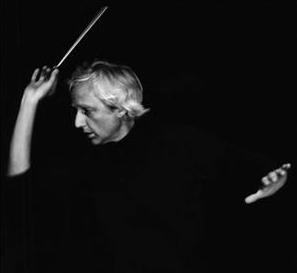
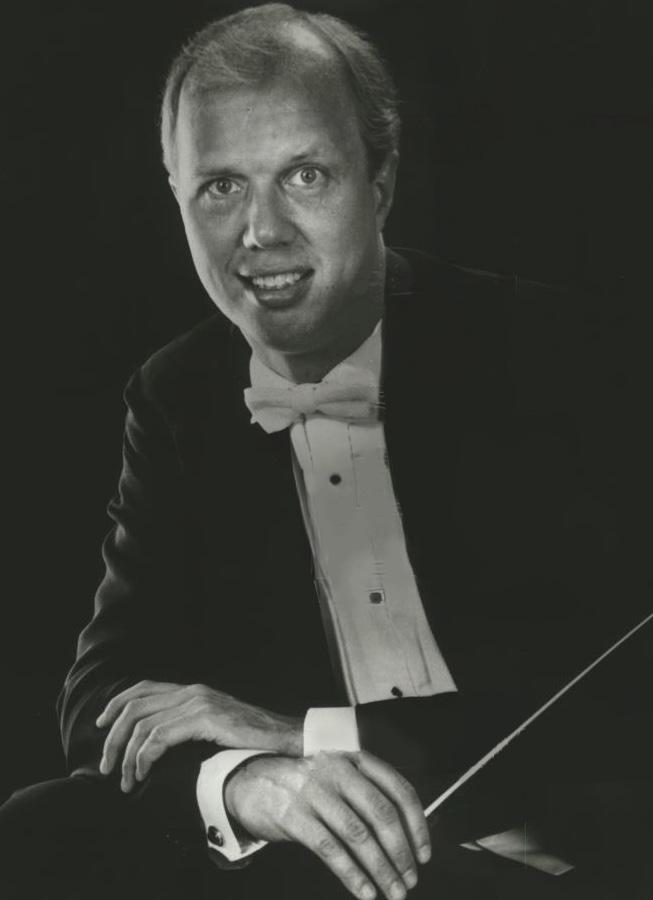



1989: The Fox becomes a movie triplex.
1991: Vakhtang Jordania becomes music director.
1993: Fabio Mechetti becomes music director, leading financial and artistic advances.
• 1996: Mechetti conducts Beethoven’s Ninth in the symphony’s first commercial recording session.
2000: The Spokane Symphony purchases the Fox Theater to revive to its original glory.
2004: Eckart Preu becomes music director, leading the orchestra into the Fox Theater era.
• 2007: Spokane Symphony moves into the renovated Fox Theater.
2019: James Lowe becomes the music director, continuing the symphony’s legacy







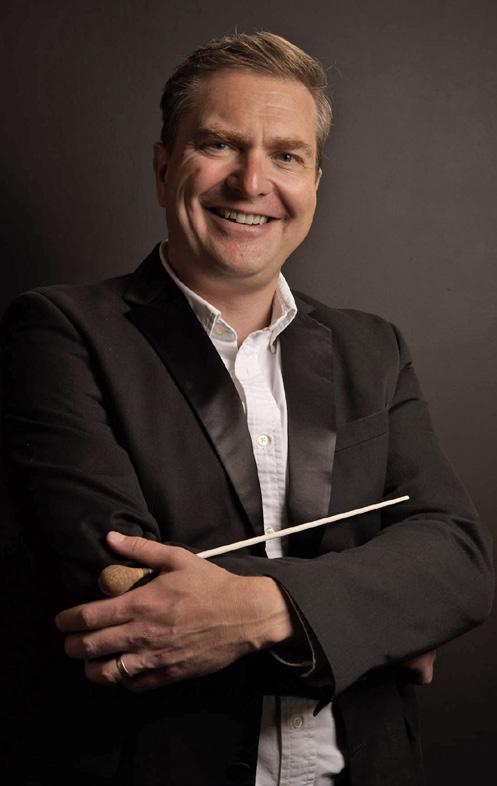
Dear Friends of the Spokane Symphony,
As we embark on our new season, I find myself reflecting on the connection that music fosters among us. Music is more than just sound; it’s a bridge that links our hearts and minds, transcending the everyday mundane. This season, we are thrilled to present an eclectic array of performances that promise to captivate and inspire.
Our season opens with Masterworks 1: The Turning World, which embodies the transformative power of music. From the breakneck thrills of Glinka’s “Ruslan and Lyudmila” Overture to the emotive strains of Tchaikovsky’s Fifth Symphony, you’ll take a journey through time and emotion. We are delighted to welcome Grammy Award winning pianist, Awadagin Pratt.
Local talent is also on display. In October, we invite you to experience Masterworks 2: Scotland the Brave! which captures the landscapes of the North in Mendelssohn’s Scottish Symphony and showcases our very own flutist Julia Pyke in Christopher Rouse’s Gaelicinspired Flute Concerto. Masterworks 3: An American Celebration, is conducted by audience favorite Morihiko Nakahara. Marking the 100th anniversary of Gershwin’s “Rhapsody in Blue,” this concert also features, Symphony saxophonist Greg Yasinitsky’s composition “Celebration Overture.”
We are particularly excited about our innovative Masterworks 4: Beethoven vs. A.I. concert, an exploration of the intersection between timeless human creativity and cutting-edge technology. This concert features an experiment where Artificial Intelligence attempts to complete a movement of Beethoven’s unfinished 10th Symphony. The fascinating technological ingenuity of A.I. serves to remind us of the irreplaceable essence of human artistry as we culminate with Beethoven’s own emotional and revolutionary “Eroica” Symphony.
This season you will explore different musical worlds. From the spellbinding melodies of Korngold’s Hollywood-inspired Violin Concerto in Masterworks 6: L.A. Stories to the grand, celestial choruses of Haydn’s “The Creation” in Masterworks 8: Let There Be Light! Each concert offers a unique window into the diverse expressions of human creativity.
For those looking to experience the magic of live orchestral music in another setting, our Pops series offers something for everyone. Whether it’s the festive Pops 3: Holiday Pops concert, the thrilling tunes of Pops 4: The Music of James Bond, or the cosmopolitan flair of Pops 5: Pink Martini, these performances are designed to entertain and delight audiences of all ages.
Let us not forget the power of music to unite and uplift. Each performance is an invitation to disconnect from the noise of everyday life and reconnect with our shared humanity. I invite you to join us at the symphony, where every concert is a chance to find yourself in the music.
Thank you for your continued support and enthusiasm. Together, we create a community that celebrates the beauty and power of music.
James Lowe Music Director,
Spokane Symphony
James Lowe assumed his role as the Music Director of the Spokane Symphony in 2019. His work as a conductor has ranged over five continents including collaboration with orchestras in the UK and Europe, Japan, Australia and the USA.
Born in Nottingham, England and currently residing in both Spokane and Scotland, he previously held the positions of Chief Conductor of the Vaasa City Orchestra in Finland, Associate Conductor of the Royal Scottish National Orchestra and Chief Conductor of the Prussian Chamber Orchestra in Germany, and worked as Orchestras Advisor to the National Youth Orchestras of Scotland.
Lowe began playing the viola as a child, and went on to graduate from the University of Edinburgh with First Class Honours in music. He was subsequently invited by Benjamin Zander to be the Zander Conducting Fellow

with the Boston Philharmonic, and was a recipient of the Bernard Haitink Fund for Young Talent, working as Assistant Conductor to Bernard Haitink with the Concertgebouw Orchestra in Amsterdam.
Lowe has conducted orchestras all over the world, including engagements with the Osaka and Tokyo Philharmonic Orchestras, the Trondheim Symphony Orchestra, the Moscow Chamber Orchestra, the Indianapolis Symphony Orchestra, the Hallé Orchestra, the BBC Philharmonic, Scottish Ballet, the Royal Liverpool Philharmonic, plus numerous other ensembles in Europe, South Africa and the United States.
In addition to his conducting work, Lowe is active as an educator, teacher of conducting, and is researching ways in which orchestras can meaningfully engage with a wider public.
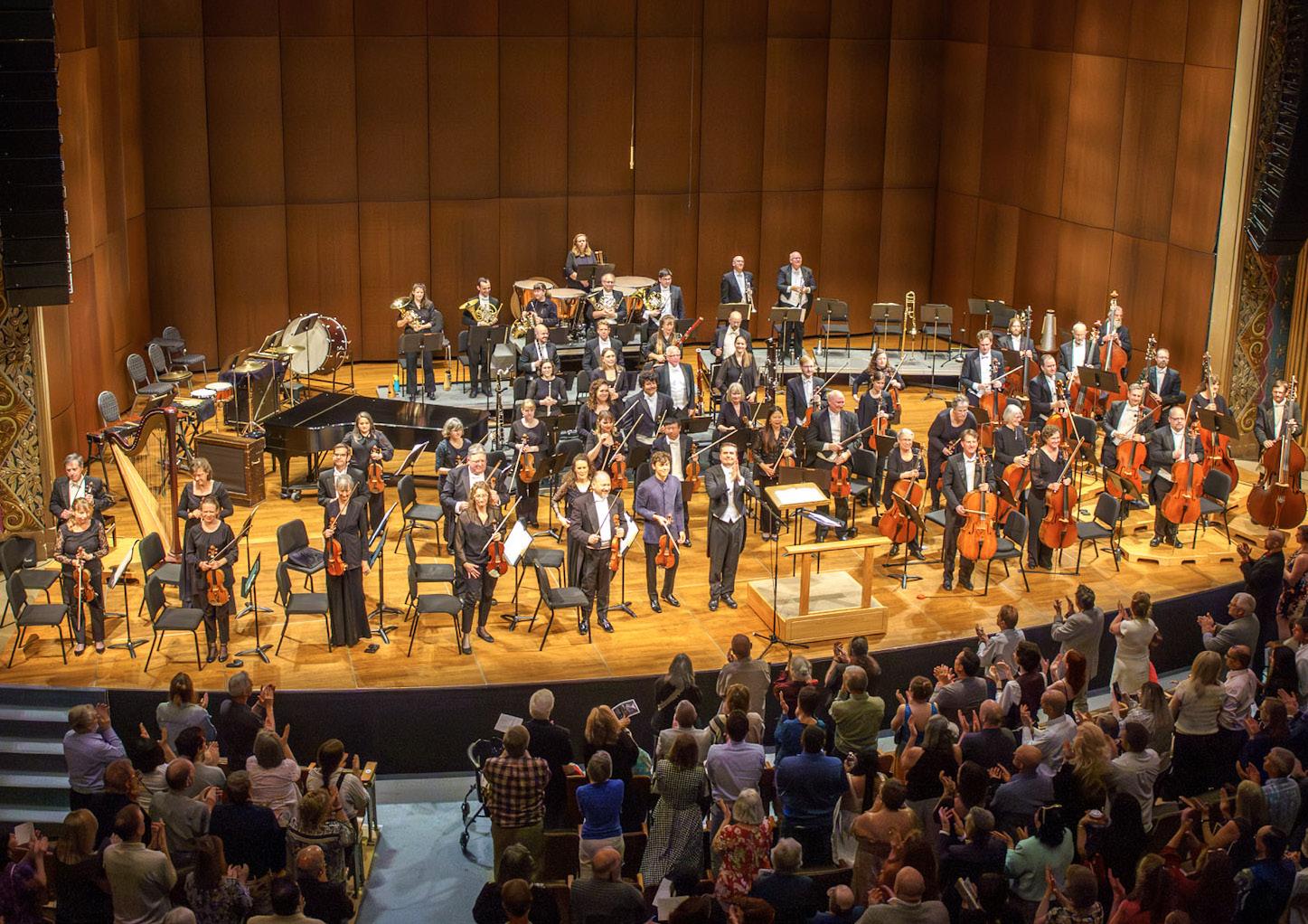
VIOLIN I
Mateusz Wolski
Concertmaster
Florence Wasmer Chair
Jason Moody+ Associate Concertmaster
Carol L. Herak Chair
Jeanne Bourgeois Assistant Concertmaster
Margaret Bowers Ayer-Blegen Chair
John Bennett
Jeri Bentley
April Martin
Elizabeth Lund
Kathleen Teal
Erica Uzcátegui Campíns* Associate Concertmaster
Carol L. Herak Chair
VIOLIN II
Amanda Howard-Phillips Principal Washington Trust Chair
David Armstrong Assistant Principal
Xu Duo
Luis Pérez Canabal
Catherine Shipley
Tiffany Wang
Allion Salvador*
VIOLA
Nick Carper Principal The Coughlin Chair
Jeannette Wee-Yang Assistant Principal
Angela Mitchell
Sarah Bass
Jessica Jasper
Michael Molnau
Joey Pomeroy
CELLO
John Marshall Principal
Jerry R. & Francis L. Strafford Chair
Helen Byrne Assistant Principal
Roberta Bottelli
Louise Butler
Sean Lamont
Kevin Hekmatpanah
Jared Carlson
Johannes Kleinmann
BASS
Patrick McNally Principal
Kim Plewniak Assistant Principal
Stephen Swanson
Jack Koncel
Brian Bonnell
Greg Youmans
FLUTE
Julia Pyke
Principal Frances L. Risdon Chair
Colleen McElroy
Sherry Knott Chair
Jennifer Slaughter
PICCOLO
Colleen McElroy
OBOE
Keith Thomas Principal
Sheila Armstrong
ENGLISH HORN
Sheila Armstrong
CLARINET
Chip Phillips Principal
Daniel Cotter
Eb CLARINET
Daniel Cotter
SAXOPHONE
Greg Yasinitsky Principal
BASSOON
Lynne Feller-Marshall
Principal
Paul and Susan Kennedy Chair
Luke Bakken
Paul Plowman

CONTRABASSOON
Luke Bakken
HORN
Clinton Webb Principal Johnston-Fix Chair
Henry Nordhorn Assistant Principal
Charles Karschney
Andrew Angelos
Kristin Joham
TRUMPET
Larry Jess Principal Johnston-Fix Chair
Chris Cook
Eric Moe
Andrew Plamondon
TROMBONE
John Church Principal
Richard Strauch
BASS TROMBONE
Skyler Johnson
TUBA
Clayton Dungey
Principal
Leonard I. Byrne Chair
TIMPANI
Hamza Able# Principal
Sherry Knott Endowed Chair
Meagan Gillis*
PERCUSSION
Leigh Wilson Principal
William Howald
Andrew Repsold
HARP
Earecka Tregenza Moody Principal
James Lowe Music Director
Dr. Meg Stohlmann Chorale Director
Dear Friends of the Spokane Symphony Orchestra,
As we come together for the 2024-25 season, we embrace resilience, excitement, and unity in our shared journey. We are profoundly grateful to our donors and supporters for their unwavering support, which has enabled us to navigate challenges while staying innovative and adaptable. Our determination to bring the transformative power of music to our community is stronger than ever. Each performance will reflect our steadfast commitment to artistry and connection.
We invite you to experience the joy of live performances, the thrill of new discoveries, and the collective strength that unites our Spokane community through the universal language of music.
This season promises an exhilarating exploration of both classic and innovative works, celebrating the enduring beauty and vitality of orchestral music. Our Masterworks series will showcase a diverse range of compositions, from timeless classics to contemporary masterpieces.
Here’s to a season of unforgettable performances and magical moments shared together!
With warmest regards, Dr. Vange Hochheimer, Board Chair
OFFICERS
Chair: VANGE OCASIO HOCHHEIMER
Vice Chair: SARA MALEKI
Chair of Finance and Audit: ANNA TORMA
Chair of Governance Committee: DR. FRANCISCO VELAZQUEZ
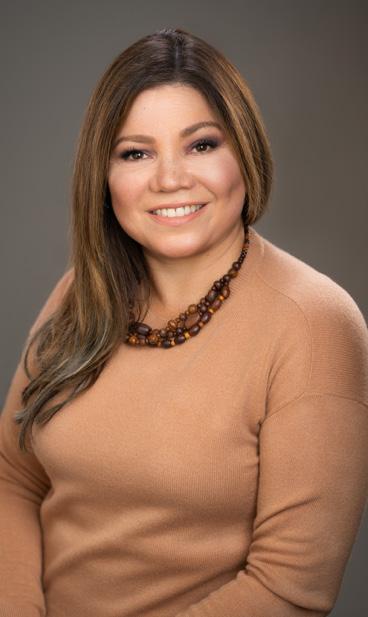
DIRECTORS
Mary Ruth Carleton
Vernice Cohen
Bruce Colquhoun (Past SSA President)
Michael Ebinger
(Emeritus Director – non-voting role)
Ann Fennessy
Carolyn Kadyk
Janet Lambarth (Past SSA President)
Sybil MacDonald
Debbie Maurus
Carol Nelson
Elizabeth Raol (SSA President)
Michael Sharapata
Keith Slater
Jennifer Slaughter (Music Representative)
Brad Stark
Anna Torma
Jeanette Wee-Yang (Music Representative)



Where can you find over 80 singers who put in over 100 hours of volunteer rehearsal and performance and always sound incredible? In the Spokane Symphony Chorale, of course; a group of doctors, nurses, realtors, salesmen, performers, and more who come together just because they love singing and sharing music with others. Since 1978, the Spokane Symphony Chorale has brought the Spokane Symphony to new musical levels in many shows throughout each season. They also take their talents into the community through their own individual projects as well as collaboration with the Spokane Symphony Associates.

Dr. Meg Stohlmann is the director of choral and vocal studies at Gonzaga University where she conducts the Concert Choir, Glee Club, Musea Treble Choir and assists with Big Bing Theory, Gonzaga’s only pop a cappella ensemble. Meg is an active member of the American Choral Directors Association and serves on the Washington state board as the student activities chair. She was also selected as one of six conductors to participate in the 2023 ACDA International Conductor’s Exchange program in Germany. Originally from Santa Rosa, California, Meg taught choir and guitar at the middle and high school level in Lexington, KY for six years and conducted the Danville Children’s Choir. Her children’s choir and high school advanced women’s choirs performed at the Kentucky Music Educators State Conference in 2014 and 2015, respectively. She earned her Doctoral of Musical Arts Degree at the University of Washington and Masters degree in Voice Performance and Choral Conducting from the University of Kentucky. A graduate of the United States Air Force Academy, Meg also served on active duty in the Air Force for 5 years in Arizona, Korea and Germany. She separated from the military in 2004 to pursue a second bachelor’s degree in Music Education at Sonoma State University. Meg’s lifelong love of choral music began as a charter member of the Santa Rosa Children’s Chorus where she sang for over 10 years and credits with her decision to make music education her career.
ENJOY THE CHORALE IN THE 2024-2025 SEASON
The Music of Harry Potter and Other Halloween Favorites Handel’s Messiah at St. John’s Cathedral
HOLIDAY POPS
New Year’s Eve: Beethoven’s 9th
MASTERWORKS 5: Daybreak of Freedom
MASTERWORKS 8: Let There be Light!


Wanda Alger
Richelle Bronson
Millie Brumbaugh
Brenda Burger
Anna Carparelli
Holly Chase
Katherine Cleveland
Sharon Fischer
Jennifer Garcia
Jenna Gigstead
Lise Hafso-Marks
Amelia Kaufman
Jamie Kizer
Anne LaBella
Janet Lambarth
Stephanie Lauritzen
Amber Lawson
Anita Lewis
Claire Liezen
Karlee Ludwig
Sara Maleki
Brittany McEachran
Maureen Miller
Kristen Nauditt

Lori Parisot
Carmyn Parks
Lisa Phillips
Rene Phillips
Grace Rowe
Judy Sawyer
Jennifer Snow
Becky Soth
Mary Steenblik
Allison Wagstaff
Lori Williams
ALTO
Marcia Amend
Trayci Ballin
Linda Besse
Jess Carlson
Rebecca Cheek
Jo Crandall
Paulina Crownhart
Becky Dahlager
Kay Deffenbaugh
Dawn DeWitt
Tianna Drew
Sara Duggin
Brook Gehring
Kathryn Gordon
Jessica Hopf
Hailey Hughes
Esther Kelley
Jordyn Kernodle
Kathryn Kleypas
Jessica Knick
Natalie Marssdorf
Kimberly Meinecke
Catherine Miller
Faith Mitchell
Heather Morton
Gretchen Ramey
Hannah Reiman
Kira Schwander
Michelle Scott
Salli Sledge
Maria Stromberg
Maggie Sullivan
Irene Supica
Alice Thomas
April Thompson
Jennifer Traeger
Debbie Zimmerman
TENOR
Micah Blauer
Mike Bullard
Trevor Bushnell
Justin Gray
Bob Jespersen
Tim Kenagy
Bobbi Kizer
David Liezen
Lucas Manfred
Brendan McEachran
Isaac Miller
Jayden Salazar
Frank Seidl
Logan Shevalier
Christian Skok
Jacob Smith
Brian Soth
Jim Swoboda
Brian Vaughn
Tom Williams
BASS
Alex Barclay
Adam Bartholomew
Andrew Cheek
Brian Cheney
Brayden Dini
Dan Eyestone
Bill Gormley
Ryan Gunn
Blaine Huizinga
Matthew Hurd
Kevin Jung
Ken Krall
Cole Reiman
Aaron Rondeau
Bill Shea
Brent Stanyer
Paul Steenblik
John Stillman
Stephen Vigus
Scott Waples
Brent Wilcox
Michael Williams
Chuck Zimmerman



Wednesday, October 16 & Thursday, October 17
Wednesday, January 22 & Thursday, January 23
Wednesday, April 16 & Thursday, April 17
All performances start at 7:30pm
Set in the opulent but intimate Davenport Historic Hotel, small ensembles play some of our musician’s favorite works of familiar composers with a few new discoveries along the way.
A wonderful way to relax and unwind from the hustle and bustle of everyday life and immerse yourself in beautiful music.
Chamber Soirée single tickets and subscription package available now.
Thank you to our concert sponsors Richard Trudell & Dr. Nancy Morrison, PhD and Andy and Liz Law.

Saturday, December 4 at 6pm
General Admission Tickets: $30
Designed for those on the autism spectrum or with other sensory issues, modifications include altered lighting levels, flexibility to move around during performance, and sensory support tools in the lobby. This is a full-length production.
Sponsored by Stephanie Plowman in loving memory of Gary Plowman, former SSO oboist
“Thank you SO much for opening this performance of The Nutcracker to our ASD community! Wow. My son was able to move as he pleased without me having to attempt to correct his behavior the entire performance. I loved all of the many added sounds from the audience members. There was space, the lighting was perfect, and the performance was absolutely beautiful. Being able to have these experiences with my son is so important to me. I spoke to some families who were able to attend The Fox for the first time and were blown away by its beauty. The whole experience delighted me to no end.”
-Sensory-Friendly Nutcracker Patron

Introducing two new dining and retail experiences.



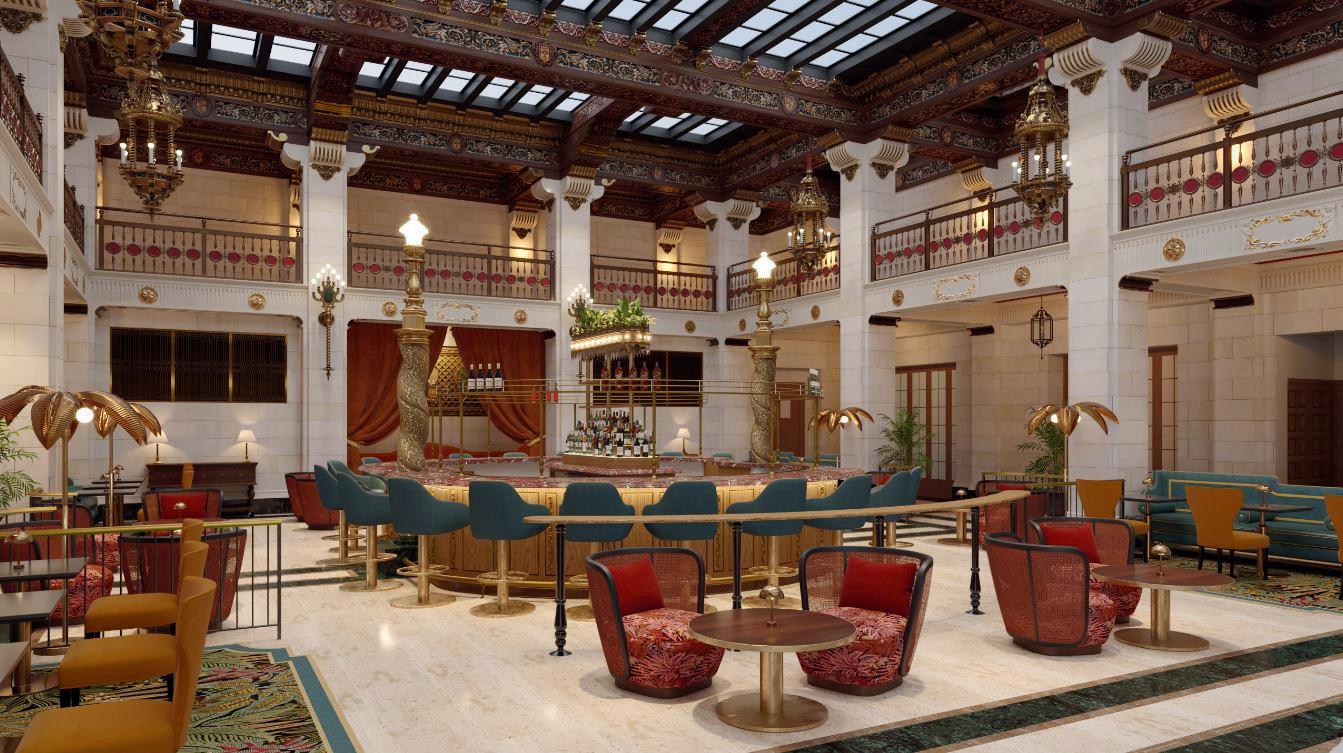
A charming coffee bar and retail shop that offers a delightful blend of artisan coffee, delectable pastries, and unique retail treasures. Start your day with an espresso or unwind with a freshly brewed cup of tea, all crafted by our expert baristas.

The perfect blend of timeless charm and contemporary sophistication. Savor expertly crafted cocktails, fine wines, and a curated selection of small bites in a setting that celebrates the rich heritage of the Davenport Hotel.



I want to welcome you all to the 79th season of the Spokane Symphony Orchestra. It is with an extra level of excitement and anticipation that I look forward to the season as I join the Spokane Symphony as the interim Executive Director. I have worked with Jeff vom Saal as both a former Board President and a Trustee for the entirety of his 9-year service and have the greatest of appreciation for his contributions.
When my wife and I arrived in the city in 2015 we began to learn about the proud, growing and impressively unique area that is Spokane. We found a city with both a long and historically significant past as well as a forward-looking spirit. This also describes our Orchestra which not only provides an elevated level of musical artistry and excitement but is a key factor amongst many others which makes Spokane so special.
Thank you for being a part or our symphony family. Your support allows us to create music - A shared joy that brings us all together. We are committed to making every concert and experience at The Fox a memorable moment.






One hour before the concert James Lowe provides insights into the music and composers. Typically joined by the guest artist, this is a great way to enhance your concert experience!
Saturday evening performance: 6:30pm Sunday matinee performance: 2:00pm

Every Thursday before a Masterworks he is conducting, Music Director James Lowe gives you the “LoweDown” on the music in a free, fascinating and lighthearted talk about the historical context, meaning, and juicy gossip with musical clips, visuals, and our conductor’s quick wit. FREE and open to the public.
Noon to 1:00PM
NORTHWEST MUSEUM OF ARTS AND CULTURE’S ERIC A. JOHNSTON AUDITORIUM 2316 W. First Avenue, Spokane
A casual and fun way to see the Symphony— with food included! See how each Masterworks performance is perfected as James, the musicians, and our guest artists shape each work in the final rehearsal. Plus, each ticket includes one mimosa, coffee, and locally-baked pastries. Tickets: $31.50
10 AM to Noon
Visit spokanesymphony.org for dates.






SEPTEMBER 14-15, 2024

Mikhail Glinka (1804-1857)
Overture to Ruslan and Ludmilla
Jessie Montgomery (b. 1981)
Rounds for Piano and String Orchestra
Awadagin Pratt, piano
Johann Sebastian Bach (1685-1750)
Concerto No. 4 in A major for Keyboard and String Orchestra, BWV 1055
Allegro Larghetto
Allergro ma non tanto
Awadagin Pratt, piano
INTERMISSION
Max Richter (b. 1966)
On the Nature of Daylight
Peter Ilyich Tchaikovsky (1840-1893)
Symphony No. 5 in E minor, Op. 64
Andante—Allegro con anima
Andante cantabile, con alcuna licenza
Valse: Allegro moderato
Finale: Andante maestoso—Allegro vivace
85 minute program with 20 minute intermission


Through his kaleidoscopic career as a pianist, conductor, educator, and curator of memorable musical moments, Awadagin Pratt is actively inventing the artistic world he longs to live in — a world that shines light on rich voices of the past and present, amplifies the diverse talents of today’s brightest creative minds, and paves the way for a new generation of inventive musical artists . Since launching onto the international stage after winning the prestigious Naumburg International Piano Competition in 1992 and receiving a 1994 Avery Fisher Career Grant, Awadagin has received acclaim for delivering “forceful, imaginative, and
precisely tinted” performances (Washington Post) and is hailed as “one of the great and distinctive American pianists and conductors of our time” (WGBH). He has appeared at addresses as familiar as 1600 Pennsylvania Avenue (at the invitation of the Clinton and Obama administrations) and Sesame Street (at the invitation of Big Bird). His breakneck concert schedule has taken him across six continents for performances with the Boston and Chicago Symphony Orchestras, the New York Philharmonic, and many others; solo recitals at the Kennedy Center, Carnegie Hall, and Lincoln Center; and chamber music collaborations with Zuill Bailey, Simone Dinnerstein, and the Harlem and St . Lawrence String Quartets Highlights of Awadagin’s 2023/24 season include concerto appearances with the Nashville, Utah, Bournemouth, and Annapolis Symphonies; A Far Cry at Boston’s Jordan Hall; and the Cincinnati, Manitoba, New Century, and IRIS Chamber Orchestras. Recital engagements include performances at Kaufman Music Center’s Merkin Hall, a program of four-hand music with Simone Dinnerstein at the Washington Performing Arts Society, and an appearance at the Irving S . Gilmore International Piano Festival . August 2023 marks the release of his first album for New Amsterdam Records, STILLPOINT, which explores the truth and beauty found within T.S. Eliot’s Four Quartets through newly composed works by Tyshawn Sorey, Paola Prestini, Pēteris Vasks, Jessie Montgomery, Jonathan Bailey Holland, Alvin Singleton, and Judd Greenstein Between performances at the piano, Awadagin maintains a bustling conducting career. This 23/24 season marks his first as Principal Conductor of the Miami Valley Symphony Orchestra and a return to the podium of the Chamber Orchestra of Pittsburgh. He recently made his conducting debut with

the Georgia Symphony Orchestra (Tbilisi); his operatic debut leading Porgy and Bess with the Greensboro Opera (North Carolina); and conducted a concert featuring the music of jazz great Ornette Coleman with Bang on a Can at the Brooklyn Academy of Music. But Awadagin’s creativity cannot be confined to the stage alone. After witnessing the globally broadcast execution of George Floyd by officers of the Minneapolis Police Department, he published a podcast that quickly evolved into a multimedia musical experience Performed primarily on college campuses across the U.S., Awadagin Pratt: Black in America fuses the music of Bach, Messaien, and Liszt with still and moving pictures by filmmaker Alrick Brown and an original narration in which he chronicles his life — from his time as a music student at the Peabody Conservatory through his ascent to international acclaim — through graphic accounts of numerous police stops and arrests he experienced for Driving While Black In 2023, a documentary film version of Awadagin Pratt: Black in America directed by Michelle Bauer Carpenter aired in more than one million U S households and screened at film festivals across the country. Awadagin’s commitment to
ushering in the next generation of agile, creative, and inventive pianists is evidenced by his work as founding director of the Next Generation Festival, the Art of the Piano Foundation, and the Nina Simone Piano Competition, a new biennial competition that celebrates diversity in classical music by showcasing the tremendous talents of young Black pianists He has adjudicated the Rubinstein International Piano Master Competition, Cleveland International Piano Competition, Minnesota e-Competition, Unisa International Piano Competition, and the International Competition for Young Pianists created in memory of Vladimir Horowitz. Having recently left his position as Professor and Artist in Residence at the University of Cincinnati College-Conservatory of Music (CCM) after two decades, Awadagin is now Professor of Piano at the San Francisco Conservatory He remains the only graduate of the Peabody Institute to earn performance certificates in three areas — violin, piano, and conducting — and has received the Distinguished Alumni Award from Johns Hopkins University and honorary doctorates from Illinois Wesleyan University, Susquehanna University, and the Boston Conservatory .

Symphony welcomes guest pianist Awadagin Pratt, who performs on two works, beginning with a new piece written for him by Jessie Montgomery. Mr. Pratt then plays the fourth and most lyrical of Bach’s keyboard concertos. Framing these pieces are an exuberant opera overture by Glinka and a moving minimalist work by Max Richter. To close, we have Tchaikovsky’s great Symphony No. 5, the composer’s ultimately triumphant struggle with Fate.
Born: June 1, 1804 . Novospasskoe, Russia .
Died: February 15, 1857, Berlin, Germany..
Overture to Ruslan and Ludmilla
Composed: completed in 1842 .
Premiere: December 9, 1842 at the Bolshoi Theater in St. Petersburg.
Duration: 5:00.
Background
Glinka, widely viewed as the founding father of Russian musical nationalism, is primarily known today through two operas The first of these, A Life for the Czar (1836), was a success both for its incorporation of elements from Russian folk music and its contemporary plot, which resonated with burgeoning Russian political nationalism For his second opera, Glinka turned to an epic poem by Pushkin. Pushkin’s Ruslan and Ludmilla had secured his reputation when it was published in 1818 and was widely known in Russian literary circles The poem is a fairy-tale recreation of ancient Slavic epics: in this case, an extremely complicated version of the “sleeping beauty” legend. Glinka had originally planned to work with the poet to create a libretto, but Pushkin died in a duel before he could collaborate on the opera. Glinka brought in a team of no fewer than five librettists, who turned Pushkin’s already convoluted storyline into an even more complicated series of tableaux. The confusing plot probably contributed to a rather lukewarm response at the premiere performance Ruslan and Ludmilla soon caught on, however, and became a recognized symbol of Russian music: the opera was performed over 300 times in St. Petersburg alone over the next half century and was widely heard in other Russian cities European and American
audiences were a bit slower to accept the work (it was not performed in the US until 1942), but it is still heard occasionally today .
Though the opera Ruslan and Ludmilla is rarely heard on today’s stages, its brilliant little overture has become a staple of the orchestral repertoire The overture is set in classical sonata form . The opening melodies, accompanied by furious violin lines, are borrowed from the opera’s final victory scene The contrasting theme, played by violas, cellos, and bassoons, is borrowed from a battlefield aria sung by the hero Ruslan in the second act. Near the end, the trombones—as usual, relegated to the role of orchestral Bad Guy—play a descending whole-tone scale associated with the evil dwarf Chernomor, but this is soon drowned out in general rejoicing
Born: December 8, 1981, New York City.
Composed: 2022
Premiere: March 27, 2022, by Awadagin Pratt and the Hilton Head (SC) Symphony Orchestra. Rounds was commissioned by the Art of the Piano Foundation for Mr. Pratt. It was co-commissioned by a consortium of nine American orchestras
Duration: 15:00.
Composer Jessie Montgomery is also prominent as a violinist, educator, and advocate for broader representation of Black and Latinx musicians in classical music. Her Grammy-winning composition Rounds was written in 2022 for Mr. Pratt.
Composer and violinist Jessie Montgomery grew up on the Lower East Side of Manhattan and credits the neighborhood’s unique artistic atmosphere and the musical, artistic, and activist activities of her own family for fostering a career that “merges composing, performance, education, and advocacy ” After her musical studies at the Third Street Music School Settlement, the Juilliard School, and Princeton

University, Montgomery remains active both as a performer and composer As a violinist, she has performed with the PUBLIQuartet, the Providence Quartet, the Catalyst Quartet, the Silkroad Ensemble, the Sphinx Virtuosi, and her own ensemble. Since she was a teenager, Montgomery has been involved with the Sphinx Organization, devoted to fostering diversity in classical music performance, which specifically promotes the development of young African-American and Latinx string players. She has gained an impressive number of credits as a composer, with commissions for the Orpheus Chamber Orchestra, the Albany Symphony Orchestra, the Metropolitan Museum of Art, and many others .
Earlier this year, Rounds won a Grammy Award for best classical composition Montgomery provides the following description of the piece:
“Rounds for solo piano and string orchestra is inspired by the imagery and themes from T .S . Eliot’s epic poem Four Quartets. Early in the first poem, Burnt Norton, we find these evocative lines :
“At the still point of the turning world. Neither flesh nor fleshless;
Neither from nor towards; at the still point, there the dance is,
But neither arrest nor movement. And do not call it fixity,
Where past and future are gathered. Neither movement from nor towards,
Neither ascent nor decline. Except for the point, the still point,
There would be no dance, and there is only the dance.
(Text © T.S. Eliot. Reproduced by courtesy of Faber and Faber Ltd.)
“In addition to this inspiration, while working on the piece, I became fascinated by fractals (infinite patterns found in nature that are self-similar across different scales) and also delved into the work of contemporary biologist and philosopher Andreas Weber, who writes
about the interdependency of all beings. Weber explores how every living organism has a rhythm that interacts and impacts all of the living things around it, resulting in a multitude of outcomes
“Like Eliot in Four Quartets, beginning to understand this interconnectedness requires that we slow down, listen, and observe both the effect and the opposite effect caused by every single action and moment. I’ve found this is an exercise that lends itself very naturally towards musical gestural possibilities that I explore in the work –action and reaction, dark and light, stagnant and swift .
“Structurally, with these concepts in mind, I set the form of the work as a rondo, within a rondo, within a rondo The five major sections are a rondo; section “A” is also a rondo in itself; and the cadenza – which is partially improvised by the soloist – breaks the pattern, yet, contains within it, the overall form of the work
“To help share some of this with the performers, I’ve included the following poetic performance note at the start of the score:
“Inspired by the constancy, the rhythms, and duality of life, in order of relevance to form:
Rondine – AKA Swifts (like a sparrow) flying in circles patterns
Playing with opposites – dark/light; stagnant/swift
Fractals – infinite design
“I am grateful to my friend Awadagin Pratt for his collaborative spirit and ingenuity in helping to usher my first work for solo piano into the world . ”
The classical rondo form is relatively easy to follow in this piece The main idea is a swirling line that travels from the piano to the strings and back. There is a contrasting episode that moves from ethereal, quiet music to more impassioned playing before a return of the main idea. A second contrasting section begins with a hushed and peaceful piano melody above a repeating string ostinato, which eventually gives way to a solo piano cadenza (At one point during this solo episode, Pratt draws delicate harp-like music from the instrument by plucking the strings.) The piece ends with a final return to the main idea and, following a robust slap from the basses, a dramatic upward-sweeping flourish
Born: March 31, 1685, Eisenach, Germany.
Died: July 28, 1750, Leipzig, Germany.
Composed: Bach probably composed this work in 1721-23 as a concerto for oboe d’amore. While the original concerto has not survived, it was reworked as a keyboard concerto sometime before 1739.
Premiere: It was undoubtedly heard for the first time in 1739 or shortly afterward in Leipzig.
Duration: 15:00.

This keyboard concerto, written for Leipzig’s Collegium Musicum, an amateur concert society, was adapted from an earlier concerto for oboe d’amore. It is set in the traditional three-movement form of the baroque concerto.
Background
In 1729, after six intensely busy years as the Kantor at Leipzig’s Thomaskirche, Bach turned once more to secular music and took up an additional position as director of Leipzig’s Collegium Musicum The Collegium was a group of some of Leipzig’s finest singers and instrumentalists that gave a series of weekly concerts— really open rehearsals or “reading sessions”—at a local coffee house . Though no formal record of their concerts has survived, it is obvious that much of the music was by Bach himself. This was an opportunity to perform his earlier instrumental concertos and chamber works, many of which dated from his years as Kapellmeister to the court of Cöthen (1717-1723). It was also a chance to compose pieces that would have been inappropriate for the staid Thomaskirche, such as his well-known “Coffee Cantata” (Schweigt stille, plaudert nicht, BWV 211)—one of Bach’s few essays in musical comedy. In 1738 or early 1739, Bach compiled a manuscript containing seven harpsichord concertos and the beginning of an eighth. These were probably pieces written for the Collegium as well, performed by Bach or possibly by one of his sons. He stepped away from the Collegium for a time in 1737-39, and these concertos would have been the perfect reintroduction to Leipzig’s secular music scene .
Keyboard (or “Clavier”) concertos were relatively rare in Bach’s time—the harpsichord was a standard part of the continuo group that improvised the harmonic foundation for baroque music, but it was not considered a solo instrument for concertos That Bach, one of the great organists and harpsichordists of his age, should have wanted to take a solo role is hardly surprising, and in 1721, he wrote what is arguably the first keyboard concerto, the Brandenburg Concerto No.5 . In this concerto grosso, the solo group includes violin, flute, and a fully written-out part for the harpsichord— including an astonishing four-minute solo cadenza in the opening movement . The later Leipzig concertos are mostly arrangements of earlier violin concertos from Cöthen, with the solo line transformed into an idiomatic keyboard part. One of the most famous of these, for example, the Concerto No.3 in D Major, is adapted from the earlier E Major violin concerto The concerto heard here, No.4 in A Major, was probably based on a now-lost concerto for oboe d’amore.
The Concerto No.4 is in three movements . As usual in baroque concertos, the soloist plays in both tutti and solo sections, though here we have a keyboard part that is freed from its usual supporting continuo role. Probably because of its original scoring for oboe d’amore, the solo part has a more lyrical quality than in some of Bach’s other keyboard concertos, particularly in the last two movements The opening Allegro begins with a lively ritornello—a passage that repeats throughout—for soloist and orchestra, laying out themes that are developed by the solo part in the course of the movement The second movement (Larghetto) has some elements of the chaconne in the gently pulsing string background, providing a simple accompaniment to the solo part’s lyrical, almost improvisatory lines The final movement (Allegro ma non tanto) combines a pair of ideas. The first is a relaxed dancestyle ritornello that supports flashy ornamentation from the keyboard, and the second is a gentler idea that hints at the newly fashionable galant style

Born: March 22, 1966, Hamelin, Germany.
Composed: 2003.
Premiere: It was recorded as part of Richter’s 2004 album The Blue Notebooks
Duration: 6:00
This quietly intense minimalist work was originally intended as a protest against the Gulf War. It has since been used frequently in television and film scores.
Background
Pianist and composer Max Richter was born in what was then West Germany, but his parents emigrated to Britain while he was a child . After training at the University of Edinburgh, the Royal Academy of Music in London, and studying with composer Luciano Berio, Richter has gone on to a successful multifaceted career, scoring for films and television, working as a producer, and issuing several successful recordings of his own music
Richter’s best-known work, On the Nature of Daylight, was written in 2003 as part of his album The Blue Notebooks, which he describes as a musical protest against the build-up to the first Gulf War. He calls this work “an attempt to make a kind of luminous music out of the darkest possible materials. The piece is structured as a sort of palindrome . It has all sorts of internal geometrical symmetries, which come from my studies of Renaissance music I’m very fond of those kinds of practices .” If this work sounds familiar to you, it has been used in many film and television scores: Shutter Island (2010), Disconnect (2012), Arrival (2016), The Handmaid’s Tale (2021), The Last of Us (2023), and nearly 20 others!
On the Nature of Daylight is in a minimalist style and proceeds by adding layers to the simple repeating progression played at the beginning by the low strings. Richter then lays on a flowing line from the second violins and, later, a soaring and serene line from the first violins. The violin parts introduce subtle variations on their repeated melodies before the piece ends quietly.
Born: May 7, 1840, Votkinsk, Russia .
Died: November 6, 1893, St. Petersburg, Russia.
Symphony No. 5 in E minor, Op. 64
Composed: Tchaikovsky’s Fifth Symphony was composed in 1888 at the composer’s summer retreat in Frolovskoe
Premiere: Tchaikovsky conducted the first performance in St. Petersburg on November 17, 1888.
Duration: 47:00
“Should not a symphony reveal those wordless urges that hide in the heart, which ask so earnestly for expression?” – Tchaikovsky
This symphony, written after a long period of depression and self-doubt, starts in a very dark place, but is ultimately triumphant.
Over ten years passed between the time Tchaikovsky completed his fourth symphony and the composition of his fifth—a decade of deep self-doubt and insecurity. During much of this period, Tchaikovsky was haunted by guilt over the ending of his brief and disastrous marriage and by upheaval in almost every area of his professional and private life. This turmoil is the very fabric of the Fourth Symphony and the opera Eugene Onegin, both of which were completed in 1878, but these works seem to have exhausted Tchaikovsky’s creative resources Much of the next ten years were spent in seclusion or traveling throughout Europe . Although he continued to compose during this time, few of the works he produced had the energy of his earlier music. It was not until 1885 and afterward, with the enthusiastic admiration of the Czar, the increased popularity of his works in Russia, and an enormously successful tour of Europe in 1887, that Tchaikovsky began to recover from this emotional crisis.
In May 1888, Tchaikovsky wrote to his brother, afraid he had “written himself out,” but added a hopeful note that he was beginning work on a new symphony. A month later, he wrote to his confidante Nadejda von Meck and made an almost apologetic reference to the work The premiere, which he conducted in November, was quite

successful, but his continuing self-doubt is shown in another letter to Madame von Meck:
“ I have come to the conclusion that [the fifth symphony] is a failure There is something repellent, something superfluous, patchy, and insecure, which the public instinctively recognizes. It was obvious to me that the ovations I received were prompted more by my earlier work and that the Symphony itself did not really please the audience. This realization brings a sharp twinge of dissatisfaction with myself Am I really played out, as they say? Can I merely repeat and ring the changes on my earlier idiom? Last night, I looked through our symphony [the fourth] What a difference! How immeasurably superior it is! It is very sad!”
It was not until the following year, after a superb performance of the new symphony in Hamburg and amid glowing reports of its success elsewhere, that Tchaikovsky himself began to express some satisfaction with the work Although the Fifth Symphony does not have an explicit program, it is apparent from Tchaikovsky’s writings that both this work and the Fourth Symphony have Fate as their central idea However, the musical realization of this idea is very different in the two works . In the fourth symphony, the motive associated with Fate is resoundingly announced by the brasses and plays an adversarial role throughout the work—it is as if, in 1878, that Fate was something against which Tchaikovsky felt a need to struggle However, his relationship with Fate in the Fifth Symphony is more resigned, even relaxed. Tchaikovsky biographer John Warrack has suggested that, in both works, the figure of Fate “is referring to his central emotional problem, his homosexuality.” It is relatively certain that, by 1888, Tchaikovsky had come to terms with it. Although he still felt guilt pangs, his acceptance was accompanied by a deepening religious conviction and renewed confidence A clear sense of this cautious self-assurance comes through in the symphony’s triumphant finale .
The symphony opens with a slow introduction (Andante), quietly stating the motto that provides the dramatic background of the entire work—the motive that Tchaikovsky identified as “Fate .” The clarinet and bassoon introduce the main idea of the movement’s
body (Allegro con anima), a minor-key theme that Tchaikovsky may have derived from a Polish folk song Strings introduce a contrasting group of ideas, which are much more lyrical in nature The movement is worked out rather conventionally in sonata form, but the music is expressive throughout, creating moods of yearning, sadness, and emotional turmoil
The second movement (Andante cantabile, con alcuna licenza) is based upon one of Tchaikovsky’s most beautiful and expressive melodies, sung by a solo horn above a light background of strings. There are gentle answers by clarinet and oboe, and a change of mood. This central section builds gradually towards a climax: a statement of the Fate motive by the brass. He returns once more to the lyrical mood of the opening, but at the end, the mood is shattered again by the return of Fate.
Tchaikovsky’s waltz (Valse: Allegro moderato) is set in a three-part form—two principal sections enclosing a contrasting section or trio In this movement, the main theme was inspired by a Florentine street melody he had heard some years earlier . The trio takes on a lighter character, dominated by a quick 16th-note melody passed among the strings and woodwinds After a reworked version of the main idea, Tchaikovsky adds a coda, which includes an ominous statement of the Fate motive by the clarinet and bassoon. Here, it is fitted into the triple meter of the waltz, but it seems no less forbidding.
The introduction to the last movement (Andante maestoso) presents the motto in a major key, now transformed from something frightening into a triumphant march. The body of the movement (Allegro vivace) returns to the E minor of the beginning of the symphony . The first group of themes are generally quite forceful, while the second group, dominated by solo woodwinds, seem more hesitant The Fate motive rounds off the exposition and pervades this movement as a whole, finally set in an extended coda At the end, there is a surprise—the main Allegro theme of the first movement returns in the closing bars, transformed, like the Fate motive, into something exultant and optimistic This ending appeals for an explanation: the dark feelings of the beginning (guilt? shame? self-doubt?) have now been assimilated or overcome; the music has come full circle, and the spirit is victorious
Program notes ©2024 by J. Michael Allsen
OCTOBER 5-6, 2024

Aileen Sweeney (b. 1994)
Glisk Christopher Rouse (1949-2019)
Flute Concerto
Amhrán Alla marcia
Elegia
Scherzo
Amhrán
Julia Pyke, flute
Felix Mendelssohn
Symphony No. 3 in A minor Op. 56 (Scottish)
Andante con moto- Allegro un poco agitato
Scherzo: Vivace non troppo
Adagio
Allegro vivacissimo
—Allegro maestoso assai
79 ½ minute program with 20 minute intermission
THANK YOU TO OUR MUSIC SPONSOR: BRUCE AND SANDY COLQUHOUN

From Seattle, Washington, Julia Pyke is Principal Flute of the Spokane Symphony . Julia has also performed with the Oregon Symphony, New World Symphony, and members of the Cleveland Orchestra and San Francisco Symphony She has performed under the baton of Michael Tilson Thomas, Marin Alsop, Larry Rachleff, John Adams, Hans Graf, Tim Weiss, Hugh Wolff, Markus Stenz, Andre Boreyko, and Ludovic Morlot
Julia has been a fellow of the Aspen Conducting Academy Orchestra at the Aspen Music Festival, Music Academy of the West, and Texas Music Festival While at Aspen Music Festival, she was named runner-up for the woodwind concerto competition, and while at Music Academy of the West, she was a finalist for both the Duo Competition and the Keston MAX audition in partnership with the London Symphony Orchestra
As the winner of SFCM’s Brass & Woodwind Concerto Competition, she performed Lowell Liebermann’s Flute Concerto with the SFCM Orchestra in 2021 She was also selected for several Danenberg Honors Recitals while at Oberlin, and for the 2019 Oberlin Orchestra tour at Carnegie Hall .
An avid music educator, Julia has previously held the position of Adjunct Professor of Flute at both Whitworth and Eastern Washington Universities . She currently maintains a private flute studio in Spokane, and is also a featured teacher on virtual lesson platform Forte in partnership with the Aspen Music Festival Her students have won the MusicFest Young Artist Competition and play in the Spokane Youth Symphony .

Julia’s primary teachers include Timothy Day, former Principal Flute of the San Francisco Symphony, and Dr . Alexa Still, former Principal Flute of the New Zealand Symphony. She completed a Bachelor of Music at Oberlin Conservatory of Music, and a Master of Music and Professional Studies Certificate at the San Francisco Conservatory of Music .
When she’s not playing the flute, Julia enjoys rock climbing, hiking, running, cooking, and singing Last Spring, she made her theater debut as Grizabella in Spokane Civic Theater’s production of CATS .
The landscape, history, and culture of Scotland fascinated 19th-century Romantics in all of the arts: from the phenomenally popular novels of Sir Walter Scott, the poetry of Robert Burns, and landscape paintings by Alexander Nasmyth and Jacob More to the first truly “romantic” ballet, La Sylphide . Felix Mendelssohn was only one of many 19th-century composers to be inspired by Scotland. One of his finest orchestral works, the Symphony No. 3, was inspired by an 1829 visit to Scotland. The two opening works also have Gaelic inspiration Glisk, by the young Scottish composer Aileen Sweeney, draws on Scottish traditional music . American composer Christopher Rouse has talked about drawing upon his Irish “genetic memory” in his 1993 Flute Concerto We are proud to feature our own principal flutist, Julia Pyke, in this work .
Born: 1994, Glasgow, Scotland.
Composed: 2022
Premiere: January 2023, by the City of Birmingham Symphony Orchestra . Duration: 4:00
Glisk is an old Scots word meaning a sudden glimmer of light—the perfect description of this high-spirited piece.
Background
Scottish composer and accordionist Aileen Sweeney was born in Glasgow and lives and works there today. According to her website:
fitting perfectly into a particular style or role I see myself somewhere in between folk music and classical music, composer and performer, the concert hall and a gig venue, and I’m looking forward to cultivating this nomadic approach to music-making ” Her Glisk was one of 20 pieces by young, “rising” composers who were commissioned to write works celebrating the hundredth anniversary of the City of Birmingham Symphony Orchestra
Regarding the title, Sweeney says: “Glisk is an old Scots word meaning a fleeting glint or flicker . It’s often used to describe a gleam of sunlight coming through the clouds or, figuratively, ‘a glimpse of the good’ in Shetland. Often used to describe fleeting moments of good weather (that probably won’t last very long!).”
This exuberant little piece opens with rather solemn music led by the brass, but the strings soon introduce an insistent ostinato that is heard through the rest of the piece: in percussion during a quiet interlude and then coming in bursts from the woodwinds during a brassy concluding section . In the end, the music fades away with delicate percussion
Born: February 15, 1949, Baltimore, Maryland. Died: September 21, 2019, Towson, Maryland.
Composed: 1993. It was commissioned for flutist Carol Wincenc .
Premiere: On October 27, 1993, with Wincenc and the Detroit Symphony Orchestra, directed by Hans Vonk.
Duration: 28:00 .

“Her music is rooted in the traditional folk music she grew up with playing the accordion and is often influenced by her interests in fields of cosmology, nature, and folklore, alongside an admiration for many different genres of music. Aileen’s music has been performed across the UK from pubs on the Isle of Skye, to primary schools in Glasgow to the Wigmore Hall and Queen Elizabeth Hall in London.”
Sweeney is particularly adept at straddling genres, noting that: “Going forward, I can’t imagine myself
Rouse’s Flute Concerto was inspired by Gaelic/ Irish musical styles. The central movement is a heartbreaking elegy to a young British toddler who was murdered by two older children.
Baltimore-born Christopher Rouse was a professor at the Eastman School of Music from 1981 to 2002, where he taught composition and the History of Rock . From 1997 to 2019, he taught composition at the Juilliard

School Rouse’s music encompasses a huge scope of musical influences—from great symphonists like Sibelius, Mahler, and Shostakovich to early Rock & Roll and Led Zeppelin. In describing his musical upbringing, Rouse notes that: “My [first] musical recollections are of Elvis Presley and Gene Vincent and Little Richard back when they were new, in the mid-fifties, and actually classical music came just a little later than that…I do remember my mother trying to counter my burgeoning interest in Rock & Roll with the Beethoven Fifth Symphony, and that worked, too—it enthralled me every bit as much.” His penchant for both catchy dance beats and heavy metal drumming shows up in works such as The Infernal Machine) and Bonham (a “rhythmic onslaught” for eight percussionists, written in memory of Led Zeppelin drummer John Bonham). His music runs the gamut from extremely loud and frantic to quiet and tender His orchestral music, in particular, gained critical acclaim, and his 1991 Trombone Concerto was awarded the Pulitzer Prize . Rouses’s final work, the Symphony No. 6, was premiered posthumously by the Cincinnati Symphony Orchestra in October 2019.
The Flute Concerto, composed in 1993, finds Rouse exploring a more quiet and brooding side of his character In his description of the piece, he writes:
“Although no universal credence for the Jungian concept of ‘genetic memory’ exists, for me it seems a profoundly viable notion. Although both of my parents’ families immigrated to America well before the Revolutionary War, I nonetheless still feel a deep ancestral tug of recognition whenever I am exposed to the arts and traditions of the British Isles, particularly those of the Celtic origin.
“I have attempted to reflect my responses to these stimuli in my flute concerto, a five-movement work cast in a somewhat loose arch form. The first and last movements bear the title Amhrán (Gaelic for ‘song’) and are simple melodic elaborations for the solo flute over the accompaniment of orchestral strings. They were intended in a general way to evoke the traditions of Celtic, especially Irish, folk music, but to couch the musical utterance in what I hoped would seem a more spiritual, even metaphysical manner through the use of extremely slow tempi,
perhaps not unlike some of the recordings of the Irish singer Enya.
“The second (Alla marcia) and fourth (Scherzo) movements are both fast in tempo. The second is a rather sprightly march, which shares some of its musical material with the fourth, a scherzo, which refers more and more as it progresses to that most Irish of dances, the jig. However, by the time the jig is stated in its most obvious form, the tempo has increased to the point that the music seems almost frantic and breathless in nature.
“In a world of daily horrors too numerous and enormous to comprehend en masse, it seems that only isolated, individual tragedies serve to sensitize us to the potential harm man can do to his fellow man. For me, one such instance was the abduction and brutal murder of the two-year-old English lad James Bulger at the hands of a pair of ten-year-old boys. I followed this case closely during the time I was composing my concerto and was unable to shake the horror of these events from my mind. The central movement of this work (Elegia) is an elegy dedicated to James Bulger’s memory, a small token of remembrance for a life senselessly and cruelly snuffed out.
Born: February 3, 1809, Hamburg, Germany. Died: November 4, 1847, Leipzig, Germany.
Symphony No. 3 in A minor, “Scottish,” Op. 56
Composed: Though he did initial sketches for the symphony in Scotland in 1829, most of it was composed in 1840-1842 while in Berlin.
Premiere: Mendelssohn led the first performance in the Leipzig Gewandhaus on March 3, 1842.
Duration: 40:00
As a young man, Mendelssohn was able to tour Europe and became a kind of musical sponge, absorbing musical and other influences everywhere he went. His famous “Scottish” symphony was directly inspired by a visit to Scotland in 1829.

As the son of a wealthy German family, Mendelssohn was able to indulge in the “grand tour”—years of wandering Europe during his young adulthood This was no idle tourism, however: he intended to refine his skills and to pick up musical influences from across the Continent Well-known as a musical Wunderkind, he presented concerts and wrote music wherever he went . He met a particularly enthusiastic reception when he arrived in London in the spring of 1829, presenting concerts of his own works and appearing as a piano soloist That summer, he and a friend left for an extended tour of Scotland . Mendelssohn was deeply affected by this visit, sketching landscapes, writing enthusiastically to family and friends, and, in a couple of cases, finding inspiration for musical works: the concert overture The Hebrides and his fine “Scottish” symphony
That he found Scotland so attractive is hardly surprising: the romantics loved Scotland, and Mendelssohn’s letters are filled with appreciative descriptions of what he saw and experienced . Soon after arriving in Edinburgh, Mendelssohn visited Holyrood Abbey. He wrote to his parents that: “The chapel beside it has now lost its roof, it is overgrown with grass and ivy, and at the broken altar Mary was crowned Queen of Scotland. Everything is ruined, decayed, and open to the sky I believe I have found there today the beginning of my Scottish Symphony .” Apparently, that same day, he sketched out the opening theme of the Andante introduction The work was largely set aside for more than a dozen years, however . It was not until late 1840, while Mendelssohn was engaged as a conductor in Berlin, that he began serious work on the symphony. He worked on it through most of the following year, finishing it in time for its premiere in Leipzig in the spring of 1842. This was to be his last completed symphony, and many agree that it is also his finest
What You’ll Hear
Mendelssohn was clearly uncomfortable about writing a symphony that could be understood as purely “programmatic,” but a few musical elements of the symphony would have been recognized as distinctly “Scottish” in character: the “Scotch snap” (a reverse dotted rhythm), the occasional use of bagpipe-style drones, and the clarinet’s folk-dance melody at the
beginning of the second movement. As a whole, however, the symphony works perfectly in purely musical terms: most of the musical material grows organically from the opening motive He also specified that the movements be played without pauses.
The first movement begins solemnly (Andante con moto- Allegro un poco agitato), with the theme Mendelssohn sketched out in 1829. This introduction leads almost seamlessly into the main body of the movement (Ç). Both main themes are derived from Mendelssohn’s 1829 idea: a restless melody introduced by the low strings and flutes and an almost hesitant closing theme played by the violins. The development focuses on the main Allegro theme, working it out in an intensely contrapuntal manner . The recapitulation is conventional enough, but the end is a surprise: after a sudden storm, the movement rather suddenly dies away, and there is a reminiscence of the opening bars before it moves directly into the scherzo.
The scherzo (Vivace non troppo) opens with a playful dance theme introduced by the clarinet. In place of the usual contrasting trio, there is a rather agitated development section that again fades suddenly to provide a transition to the next movement . The Adagio’s main idea is a lovely, long-breathed melody spun out by the strings. This sublime mood alternates with uneasy march-like music from the brass and woodwinds.
The beginning of the fourth movement is the only abrupt transition in this symphony. Though the opening of this movement is marked Allegro vivacissimo in the score, Mendelssohn suggested in his preface that this be described in the program as a “warlike Allegro .” Warlike associations are there, to be sure: an insistent pulsing background and an almost angry theme. A more peaceable contrasting idea bears a clear family resemblance to the first movement’s main theme. This idea is quickly swept away by more intense music several times until it finally wins out in a long duet for clarinet and bassoon. This introduces the final section (Allegro maestoso assai), where low strings introduce a broad theme. The full orchestra quickly takes this up, bringing the symphony to a stirring conclusion.
Program notes ©2024 by J. Michael Allsen























































At Idaho Central Credit Union, we’re in the business of making a difference. It’s not only about helping our members achieve financial success but extends to supporting our communities. We believe the Spokane Symphony adds smiles!




NOVEMBER 2-3, 2024

Gregory Yasinitsky (b.1953)
Celebration Overture
Gabriela Lena Frank (b. 1972)
Concertino Cusqueño
George Gershwin (1898-1937)
Rhapsody in Blue
Sara Davis Buechner, piano
John Adams (b. 1947)
The Chairman Dances (Foxtrot for Orchestra)
Leonard Bernstein (1918-1990)
Fancy Free
Enter Three Sailors
Scene at the Bar
Enter Two Girls
Pas de deux
Competition Scene
Three Dance Variations:
Galop
Waltz
Danzon
Finale
81 minute program with 20 minute intermission
THANK YOU TO OUR CONCERT SPONSOR: JOAN DEGERSTROM

A native of Kagoshima, Japan, Morihiko Nakahara has served as Music Director of the South Carolina Philharmonic since 2008 During the 2024-2025 season, Nakahara remains active as a guest conductor, including conducting multiple programs with the Virginia Symphony and Spokane Symphony, as well as appearing with the Central Conservatory of Music Orchestra (Beijing), Wuxi Symphony Orchestra (China), Long Beach Symphony, and the Festival at Sandpoint Orchestra .
Known for his charismatic presence on and off the podium, innovative and audience-friendly programming skills, and thoughtful interpretations of both standard and contemporary repertoire, Nakahara was featured in the League of American Orchestra’s prestigious Bruno Walter National Conductor Preview in March 2005. Recent guest conducting engagements include appearances with the Florida Orchestra, Rhode Island Philharmonic, symphonies of Portland (Maine), Charleston, and Ann Arbor, as well as with the Baltimore Chamber Orchestra.

Equally at home in a wide variety of musical styles and concert formats, Nakahara is a tireless advocate for commissioning and performing new music as well as for introducing works by underrepresented composers past and present . A personable ambassador for the power of symphonic music in every community, he is also known for leading concerts synchronizing live orchestral soundtrack with film including the Star Wars franchise, Jurassic Park, Tim Burton’s The Nightmare Before Christmas, and Psycho, to name a few .
A native of Kagoshima, Japan, Nakahara holds degrees from Andrews University and the University of Cincinnati College-Conservatory of Music He previously served as Resident Conductor of the Spokane Symphony Orchestra, Associate Conductor of the Jacksonville Symphony Orchestra, Music Director of the Holland Symphony Orchestra (Michigan), and served on the faculty at University of Massachusetts Amherst, Eastern Washington University, and Andrews University . Nakahara and his family reside in Yorktown, Virginia .

Noted for her musical command, cosmopolitan artistry, and visionary independence, Sara Davis Buechner is one of the most original concert pianists of our time . Lauded for her “intelligence, integrity and allencompassing technical prowess” (New York Times), “thoughtful artistry in the full service of music” (Washington Post), and “astounding virtuosity” (Philippine Star), Japan’s InTune magazine sums up: “Buechner has no superior . ”
In her twenties Ms. Buechner earned a bouquet of top prizes at the world’s premiere international piano competitions — Queen Elisabeth (Brussels), Leeds, Mozart (Salzburg), Beethoven (Vienna), and Sydney She was a Bronze Medalist of the 1986 Tschaikowsky Competition in Moscow and the Gold Medalist of the 1984 Gina Bachauer International Piano Competition .
Ms . Buechner has performed in every state and province of North America — as recitalist, chamber musician and soloist with top orchestras like the New York Philharmonic, San Francisco Symphony and Philadelphia Orchestra; and in venues such as Carnegie Hall, the Kennedy Center and the Hollywood Bowl . She has toured throughout Latin and South America and Europe; and she enjoys a special following in Asia, where she has been a featured soloist with the Sydney Symphony, New Zealand Philharmonic, New Japan Philharmonic and Shanghai Philharmonic, among many others
She has commissioned and premiered important contemporary scores by composers such as Michael Brown, John Corigliano, Ray Green, Dick Hyman, Vitězslavá Kaprálová, Jared Miller, Joaquín Nin-Culmell, and Yukiko Nishimura . Ms . Buechner’s performance versatility extends to unique collaborations with film and dance (including tours with the Mark Morris Dance Group, and Japanese kabuki-mime-mask dancer Yayoi Hirano).

Ms Buechner has released numerous acclaimed recordings of rare piano music by composers such as Rudolf Friml (“a revelation” — The New York Times), Dana Suesse, Joseph Lamb, Joaquín Turina, Miklós Rózsa, and Ferruccio Busoni (including the world première recording of the BachBusoni “Goldberg” Variations). Stereophile magazine selected her Gershwin CD as “Recording of the Month,” and her interpretation of Hollywood Piano Concertos won Germany’s coveted Deutsches Schauplatten Preis . Most recently her recorded traversal of the score to Carl Dreiser’s silent movie classic Master of the House (1925) may be heard on Criterion Collection DVD .
Sara Davis Buechner joined the faculty of Temple University’s Boyer College of Music and Dance in 2016, after previously teaching at the Manhattan School of Music, New York University and the University of British Columbia. She has presented masterclasses and workshops at major pedagogic venues worldwide, adjudicated important international piano competitions, and is also a contributing editor for Dover Publications International In 2017 Ms Buechner marked her 30th year as a dedicated Yamaha Artist.
As a proud transgender woman, Ms . Buechner also appears as a speaker and performer at important LGBTQ events, and has contributed interviews and articles about her own experience to numerous media outlets worldwide .
Sara is a dual American-Canadian citizen who makes her home in Philadelphia

Guest conductor Morihiko Nakahara leads this Spokane Symphony program, which opens with music by one of our own: Gregory Yasinitsky’s bright Celebration Overture. Gabriela Lena Frank draws on her Peruvian heritage and the music of Benjamin Britten in her colorful Concertino Cusqueño . Pianist Sara Davis Buechner joins us for George Gershwin’s jazz-inspired Rhapsody in Blue John Adams’s The Chairman Dances might be described as a kind of “prequel” to his 1986 opera Nixon in China. In The Chairman Dances, Adams portrays the characters of Chairman Mao and his former wife with an eclectic blend of minimalism and other styles. We close with Leonard Bernstein’s ballet score Fancy Free, an enjoyable musical portrait of three rowdy sailors on shore leave
Born: October 3, 1953, San Francisco, California.
Celebration Overture
Composed: 2022
Premiere: July 12, 2022, by the McCall (Idaho) SummerFest Orchestra, directed by Eric Garcia.
Duration: 10:00
Celebration Overture lives up to its name: it is an upbeat, optimistic, and—well—“celebratory” piece. Its composer is a longtime member of the Spokane Symphony.
Background
Composer, arranger, and saxophonist Gregory Yasinitsky is widely published in the fields of jazz and classical music As a saxophonist, he has played with a huge range of leading artists and leads his own big band, the Yazz Band, and a jazz quintet, Crosscurrent, groups performing primarily his own compositions and arrangements He has served as principal saxophone for the Spokane Symphony since 1991. Yasinitsky was trained at San Francisco State University and the Eastman School of Music, and he recently retired (2022) after 40 years teaching at Washington State University . Celebration Overture was commissioned to celebrate the 10th anniversary of SummerFest (now MusicFest) in McCall, Idaho—according to the composer: “Celebration Overture was written especially for our
wonderful SummerFest orchestra, the members of which are drawn from some of the finest musicians from across the country .” During a phone conversation, he described it as “a kind of concertino for orchestra, in which all sections are featured and solo lines are distributed throughout the orchestra.”
Yasinitsky provides the following description of the piece:
“Celebration Overture is a one-movement piece in three sections, showcasing all of the instruments of the orchestra: strings, woodwinds, brass, and percussion. The first section begins with the brass and leads to a spirited theme, first heard in the strings, which rises as the music progresses . More and more instruments are added, leading to a presentation by the full orchestra. This is followed by a slow, lyrical, reflective section with a melody introduced by the flute and English horn, along with harp and strings. The orchestration becomes richer as themes are traded among instruments, leading to a dramatic statement by the full ensemble. The percussionists initiate the third section, which makes reference to the introductory music at the beginning of the piece, and leads to a heroic theme presented in the low brass. The music continues with energy and optimism, which culminates in the climax of the work, scored for the entire ensemble.”
Born: September 26, 1972, Berkeley, California.
Composed: 2012 .
Premiere: October 25, 2012 by the Philadelphia Orchestra
Duration: 11:00
This lively and colorful work combines sly references to the music of Benjamin Britten, Peruvian traditional styles, and good humor— all in good measure!
Background
Composer and pianist Gabriela Lena Frank was born in Berkeley California, to a Peruvian/Chinese mother and a Lithuanian/Jewish father. She was born with a significant

hearing loss but has clearly overcome this in her career. Frank is widely known as a performer and received a Latin Grammy Award for one of her recordings . As a composer, she has written commissioned works for Yo-Yo Ma, The King’s Singers, and several major orchestras . Frank has served as a Composer-inResidence to the Houston Symphony Orchestra, the Detroit Symphony Orchestra, and the Philadelphia Orchestra . Frank often draws upon her multicultural background, most frequently her mother’s Peruvian heritage, but also a wide variety of other cultures in her work: she has traveled widely throughout Latin America in search of musical influences . As she puts it, she decided early in her career that: “I wanted to, in a very general way, be as mestiza [a woman of mixed race] in my music as I was in my person: I’m multiracial, I’m multicultural, and I think that’s something deeply American.” A believer in community outreach, she founded the Gabriela Lena Frank Creative Academy of Music at her home in Boonville, in northern California, to foster young composers. Frank also volunteers to bring music into prisons and hospitals and has also worked extensively to enhance public school music programs in Boonville, an under-resourced rural school system with a large Latino population
Frank provides the following description:
“Concertino Cusqueño, written to celebrate the fine players of the Philadelphia Orchestra on the eve of Yannick Nézet-Ségun’s inaugural season as Music Director, finds inspiration in two unlikely bedfellows: Peruvian culture and British composer Benjamin Britten. As a daughter of a Peruvian immigrant, I’ve long been fascinated by my multicultural heritage and have been blessed to find Western classical music to be a hospitable playpen for my wayward explorations. In doing so, I’ve looked to composers such as Alberto Ginastera from Argentina, Béla Bartók from Hungary, Chou Wen Chung from China, and my own teacher William Bolcom from the US as heroes: To me, these gentlemen are the very definition of “cultural witnesses,” as they illuminate new connections between seemingly disparate idioms of every hue imaginable.
“To this list, I add Britten, who I admire inordinately. I wish I could have met him, worked up the nerve to show him my own music, invited him to travel to beautiful Perú with me... I would have shared chicha morada (purple corn drink) with him, taken him to a zampoña panpipe instrument-making shop, set him loose in a mercado (market) streaming with immigrant chinos and the native indio descendants of the Incas. I would have loved showing him the port towns exporting anchoveta (anchovies), the serranos (highlands) exporting potatoes, and the selvas (jungles) exporting sugar. And I know Britten would have been fascinated by the rich mythology enervating the literature and music of this small Andean nation, so deeply similar to the plots of his many operas, among other works.
“Concertino Cusqueño melds together two brief musical ideas: The first few notes of a religious tune, Ccollanan María, from Cusco (the original capital of the Inca empire Tawantinsuyu, and a major tourist draw today) with the simple timpani motif from the opening bars of the first movement of Britten’s elegant Violin Concerto. I am able to spin an entire one-movement work from these two ideas, designating a prominent role to the four string principal players (with a bow to the piccolo/ bass clarinet duo and, yes, the timpanist). In this way, while imagining Britten in Cusco, I can also indulge in my own enjoyment of personalizing the symphonic sound by allowing individuals from the ensemble to shine.”
Born: September 26, 1898, New York City, New York
Died: July 11, 1937, Los Angeles, California.
Composed: January and February 1924.
Premiere: Gershwin was the piano soloist with the Paul Whiteman Orchestra in the premiere in New York City on February 12, 1924.
Duration: 16:00
Gershwin’s 1924 Rhapsody in Blue was his first great success in fusing Jazz style and Classical form and scoring.

By 1924, Gershwin was a huge success on Broadway and well-regarded as a pianist . It was at this time that Paul Whiteman conceived one of the most ambitious concerts of the Roaring ‘20s Whiteman, the “King of Jazz,” announced an “Experiment in Modern Music” for February 12, 1924, a concert that would supposedly answer the question “What is American Music?” Whiteman planned to bring together jazz of all styles with classical music and newly composed works by composers such as Irving Berlin and Victor Herbert. Whiteman and Gershwin had casually chatted about a large-scale jazz-style orchestral work for the Whiteman Orchestra. But this casual commitment became a fait accompli when Gershwin read the New York Herald’s January 3 announcement that he was “already at work” composing a “jazz concerto” for Whiteman’s grand concert! Composing a concerto in just over a month was daunting for a composer who had never written a work of this scale and already had several heavy Broadway commitments Rather than attempting a traditionally conceived concerto, Gershwin settled on a “rhapsody”—a much less rigorous form that would allow him to develop musical ideas freely According to a letter by Gershwin, the final inspiration for the score came during a train trip to Boston for the opening of his show Sweet Little Devil:
“It was on the train, with its steely rhythms, its rattlety-bang that is often stimulating to a composer—I frequently hear music in the heart of noise—I suddenly heard—and even saw on paper— the complete construction of the rhapsody from beginning to end. No new themes came to me, but I worked on the thematic material already in my mind and tried to conceive the composition as a whole.
I heard it as a musical kaleidoscope of America, of our vast melting pot, of our national pep, of our blues, our metropolitan madness. By the time I reached Boston, I had a definite plot of the piece, as distinguished from its actual substance.”
Given Gershwin’s relative inexperience in writing for orchestra and the short lead time available, much of the orchestration was done by Whiteman’s staff arranger, Ferde Grofé In the end, Whiteman’s pretentious and over-long “Experiment” was a qualified success However, Gershwin’s Rhapsody in Blue—the 24th work on a program of 25 pieces—stole the show.
The Rhapsody opens with a famous clarinet glissando, the trademark lick of Ross Gorman, Whiteman’s lead clarinetist, which Gershwin adopted as the perfect lead-in to the first theme The piece develops freely, with one theme flowing naturally into the next and with increasing intensity until the piano takes an extended solo and slows the tempo The central section is based on a romantic melody that sounds like a nod to Tchaikovsky, with a bit of jazz punctuation. There is a recapitulation, and the piece ends aggressively, with the solo piano playing its loudest
Born: February 15, 1947, Worcester, Massachusetts.
The Chairman Dances (Foxtrot for Orchestra)
Composed: The Chairman Dances, composed in 1985, is an orchestral work related to Adams’s opera Nixon in China .
Premiere: This piece was performed before the opera as a whole was complete: it was premiered by the Milwaukee Symphony Orchestra on January 31, 1986.
Duration: 13:00.
Nixon in China was an opera based on President Nixon’s 1972 visit to China. The Chairman Dances accompanied a scene cut from the final version of Act III., a banquet on the final night of the visit. The work begins with persistently pulsing music, which gradually evolves, giving way to a more lush style and eventually to a foxtrot. The original rhythmic energy returns—now with a lyrical overlay—before the piece winds quietly to close.
“The myths of our time are not Cupid and Psyche, or Orpheus, or Ulysses, but characters like Mao and Nixon.” - John Adams.
Richard Nixon’s 1972 trip to China was the greatest diplomatic coup of his presidency The staunchly anti-Communist Nixon surprised the world by visiting a then-closed and isolated China and meeting both with Premiere Zhou Enlai and Chairman Mao. Though the actual results of the visit were limited, it was a

powerfully symbolic opening in what had been a hostile relationship. Some 15 years later, John Adams wrote Nixon in China—his first full-length opera—on the events of the three-day presidential visit to Peking
Adams is one of several composers whose music is frequently characterized—sometimes misleadingly— as “minimalist.” This style, pioneered in the 1960s and 1970s by composers such as Steve Reich, Philip Glass, Terry Riley, LaMonte Young, and Adams, featured constant repetition and simple musical changes that are carried out very gradually over a long period of time In the last 40 years, Reich, Glass, and Adams have all moved far beyond the original minimalist style, and by the mid-1980s, when he wrote Nixon in China, Adams was already working with an eclectic range of styles and techniques Nixon in China, which Adams described as a “docu-opera,” was a three-year collaboration with director Peter Sellars and librettist Alice Goodman. It is notable for its intense character development and innovative use of operatic conventions The Chairman Dances was premiered while the rest of the opera was still in progress .
What You’ll Hear Adams describes its composition as follows:
“The Chairman Dances was an ‘out-take’ of Act III of Nixon in China. Neither an ‘excerpt’ nor a ‘fantasy on themes from,’ it was, in fact, a kind of warmup before embarking on the creation of the full opera. At the time, 1985, I was obliged to fulfill a longdelayed commission for the Milwaukee Symphony, but having already seen the scenario to Act III of Nixon in China, I couldn’t wait to begin work on that piece. So The Chairman Dances began as a ‘foxtrot’ for Chairman Mao and his bride, Chiang Ch’ing, the fabled ‘Madame Mao,’ firebrand, revolutionary executioner, architect of China’s calamitous Cultural Revolution, and (a fact not universally realized) a former Shanghai movie actress.”
This music was initially intended for the opera’s final scene, a formal banquet for the Nixons, hosted by Mao, who looks down from an enormous portrait . Though this scene did not appear in the final version, Adams describes the action:
“Chiang Ch’ing, a.k.a. Madame Mao, has gatecrashed the Presidential Banquet. She is first seen standing where she is most in the way of the waiters. After a few minutes, she brings out a box of paper lanterns and hangs them around the hall, then strips down to a cheongsam, skin-tight from neck to ankle and slit up the hip. She signals the orchestra to play and begins dancing by herself. Mao is becoming excited. He steps down from his portrait on the wall, and they begin to foxtrot together. They are back in Yenan, dancing to the gramophone...”
According to Adams, the final act is about love and aging In its final state, Mao, Chiang Ch’ing, and the Nixons reminisce about the simpler days gone by: the Nixons about the early days of their marriage and his tour of duty in World War II, and the Maos about the months before the Revolution, when they spent quiet times together in the caves at Yenan . These reminiscences are treated with humor in The Chairman Dances—as in the chugging opening music associated with Mao or Chiang Ch’ing’s more seductive dance . But the end result is sweet and melancholy .
Born: August 25, 1918, Lawrence, Massachusetts. Died: October 14, 1990, New York City.
Fancy Free
Composed: 1943-44.
Premiere: April 18, 1944, at the Metropolitan Opera in New York City . Duration: 25:00.
The ballet Fancy Free is a boisterous picture of three World War II sailors on shore leave in New York City.
The prodigiously talented Leonard Bernstein could have had any one of several successful careers: piano soloist, classical composer, conductor, writer, lecturer, or Broadway songwriter . In fact, Bernstein chose to do all of these things and did all of them very well! At age 25, he was named assistant conductor of the New York Philharmonic, and his legendary “big break” came on November 14, 1943, when, with just a few hours’ notice, he substituted for Bruno Walter in a nationally broadcast

concert from Carnegie Hall. Shortly before this, Bernstein had been approached by a dancer named Jerome Robbins. Unlike Bernstein, who was already a star, Robbins was still up-and-coming but was every bit as ambitious. He wanted Bernstein to write a score for his Fancy Free—his first ballet, to be performed by the Ballet Theater of New York. The two hit it off immediately, and Bernstein immediately began work on the ballet’s score.
The original inspiration for the story was a pair of paintings by the New York artist Paul Cadmus, The Fleet’s In! and Shore Leave . These were energetic and popular images of sailors on leave, though the frank sexuality of Cadmus’s works was sometimes controversial. The scenario for the ballet involved three sailors on shore leave in New York on a hot summer night. They meet a pair of girls in a bar and begin to fight over which of them will be the odd man out. They stage a kind of competition, each dancing a solo designed to impress the girls, but in the end, both girls lose interest and walk off. Though Robbins created the choreography using the vocabulary of Classical Ballet, there are also hints of the dances that were current in ballrooms and bars across America, the Shag, the Lindy Hop, and the Jitterbug. Bernstein’s score is every bit as much a blend of ballet and popular music. The ballet was a phenomenal success, making Robbins a celebrity and increasing Bernstein’s fame as a composer . Later, in 1944, the pair collaborated again on a full-scale Broadway show, On the Town This show, which expands on the story of Fancy Free (though with entirely new music), would be a huge hit, and, in 1949, an Oscarwinning film
The score is laid out in seven sections, played without pauses . Enter Three Sailors begins with a raspy muted trumpet and the sound of a song being played on a phonograph: Billie Holiday singing Bernstein’s song Big Stuff . The swaggering music in the orchestra alternates with piano and drumset The second section, Scene at the Bar, is a quiet Blues for woodwinds, strings, and piano . In Enter Two Girls, the girls enter the joint, swaggering every bit as much as the sailors, obviously confident and on the prowl The humorous Pas de deux, with slinky music for muted brass, has one sailor after another trying his luck with the girls, eventually building to a rather grandiose climax. It soon becomes apparent that, in this case, three sailors are a crowd, and in the Competition Scene, a fight breaks out—an early and completely lighthearted version of the kind of aggressive music Bernstein would later write for violent scenes in On the Waterfront and West Side Story. The following sections are labeled “Three Dance Variations”—one for each sailor The Galop is frantic and macho, while the Waltz, with its oddly dropped beats, is danced by a sailor who has obviously had a bit too much to drink The final variation, Danzon, is a Latin-flavored number with hints of the Mambo, a dance that was just starting to become popular in New York City ballrooms. The Finale is a kind of free-for-all that brings together many of the earlier themes. The two girls leave abruptly (you’ll hear the brass standing in for sailors cussing in dismay). The sailors make up and swear off women, but at the very end, another girl walks in, and the whole thing starts again .




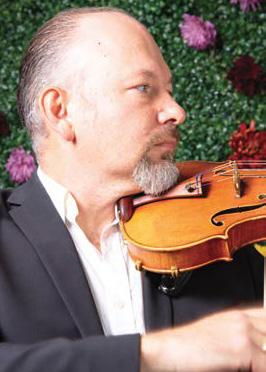

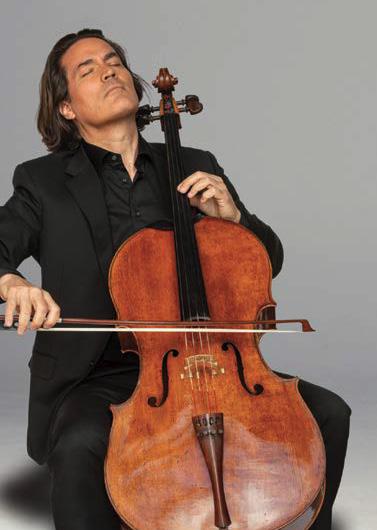


Whether you’re a seasoned concertgoer or a newcomer to the world of classical music, this glossary will help you navigate the language that describes the elements of the symphony you are about to enjoy.
So before the lights dim and the conductor raises the baton, we invite you to delve into this curated collection of musical terms and enhance your listening experience.
- Adagio: Slowly.
- Allegro: Quickly.
- Allegro energico: Energetic and lively.
- Allegro guerriero: Warlike and forceful.
- Allegro ma non tanto: Fast, but not too much.
- Allegro moderato: Moderately fast.
- Allegro vivacissimo: Very lively and fast.
- Andante: A moderate, easily flowing pace.
- Andante con moto: A moderate pace with more forward movement.
- Accelerando: Gradually speed up.
- Bagpipe-style drones: A continuous, sustained pitch or pitches, reminiscent of bagpipe music.
- Baroque concerto: A type of concerto from the Baroque period (very roughly 1600-1750), typically in three movements.
- Bluesy: A jazz-inspired style of music characterized by its use of blue notes and a specific harmonic structure.
- Cadenza: An elaborate solo passage, typically near the end of a movement in a concerto that allows the soloist to demonstrate their virtuosity.
- Canon: A technique that employs a melody passing between voices played after a given duration. Think “Row, Row, Row Your Boat”.
- Cantabile: A style of playing that is song-like and lyrical.
- Chaconne: A musical form with variations over a repeated short harmonic progression, a la Pachelbel’s Canon.
- Classical rondo form: A musical form characterized by a recurring leading theme, typically found in the final movement of a sonata or concerto.
- Concerto: a work for solo instrument and orchestra, usually in three movements.
- Concertino: A small or short concerto.
- Counterpoint: The simultaneous combination of independent melodic lines creating harmonious interplay.
- Crescendo: Gradually get louder.

- Decrescendo/diminuendo: Gradually get softer.
- Drone: A continuous, sustained pitch or pitches, often used to create a harmonic background.
- Dynamics: The volume of sound in music, including terms like crescendo (get louder) and diminuendo (get softer) as well as the abbreviations pp (pianissimo: very soft), p (piano:soft), mp (mezzo piano: literally “half soft”, mf (mezzo forte: literally “half loud”), f (forte: loud), ff (fortissimo: very loud).
- Elegia: A piece that is mournful or reflective in nature.
- Fantasia: A free-form musical composition with a structure that follows the composer’s imagination rather than a set pattern or form.
- Fugato: A passage within a composition that employs fugal techniques but isn’t technically a fully worked-out fugue.
- Fugue: A strict compositional form involving the systematic imitation and development of themes across multiple voices.


- Galant style: A style of music from the early Classical period (very roughly 1750-1820) that emphasized lightness and elegance.
- Grave: Very slow and solemn.
- Horn obbligato: A prominent solo horn part that is integral to the texture of the music.
- Interlude: A short piece of music that occurs between the main sections of a composition.
- Juba dance: A traditional AfricanAmerican dance involving rhythmic hand clapping and foot stomping.
- Larghetto: Somewhat slowly, but not as slow as Adagio.
- Larghissimo: Very, very slow
- Largo: Broadly, slow and dignified
- Lento: Slow
- Lyricism: A quality of music that is expressive and song-like.
- Major: Music written in “major” keys tends to sound bright and positive.
- Minor: Music written in “minor” keys tends to sound sad or melancholy.
- Minimalist style: A style of music that employs limited musical materials, often repeated.
- Moderato: Moderately
- Movement: A section of a larger composition like a concerto or symphony, often with a brief pause in between movements.
- Oboe d’amore: A member of the oboe family, slightly larger than the modern oboe, with a more mellow tone, used primarily in the Baroque period.
- Ostinato: A looped musical phrase or rhythm.
- Palindromic structure: A symmetrical musical structure that reads the same forwards and backwards.
- Piano: Play softly.
- Pianissimo: Play very softly.
- Presto: Extremely fast
- Prestissimo: Even faster than Presto
- Programmatic: Music that is intended to evoke images, convey a story, or give the impression of events.
- Quasi una Fantasia: In the manner of a fantasia (so no formal structure).
- Rhapsody: A one-movement work that is irregular in structure, intended to express emotion and include a range of highly contrasted moods.
- Ritardando: Gradually slow down.
- Ritornello: In a baroque concerto, a recurring orchestral theme that
alternates with contrasting solo sections, creating a dialogue between soloist and orchestra.
- Rondo: A musical form with a recurring leading theme.
- Rondo Form: A principal theme alternates with one or more contrasting themes.
- Scherzo: A vigorous, light, or playful composition, typically comprising a movement in a symphony or sonata. From the Italian for “joke”.
- Scotch snap: A rhythmic figure featuring a short, accented note followed by a longer one.
- Sforzando: With emphasis or forceful accent.
- Sonata: A larger-sized composition written primarily for keyboard or for another solo instrument with keyboard accompaniment.
- Sonata form: A musical structure consisting of three main sections: exposition, development, and recapitulation.
- Spiritual: A genre of music that is deeply rooted in the religious and folk traditions of African Americans.
- Tempo: The speed at which a passage of music is played.
- Tremolo: Rapid repetition of a single note or rapid alternation between two notes.
- Vivace: Lively and fast


- Vivace non troppo: Lively and fast, but not too much.

The Spokane Symphony’s education and community programs foster a love for music across all ages. Thanks to the generosity of individual donors, businesses and foundations, these enriching programs continue to be a free gift to our schools and community enriching lives with the universal language of music.
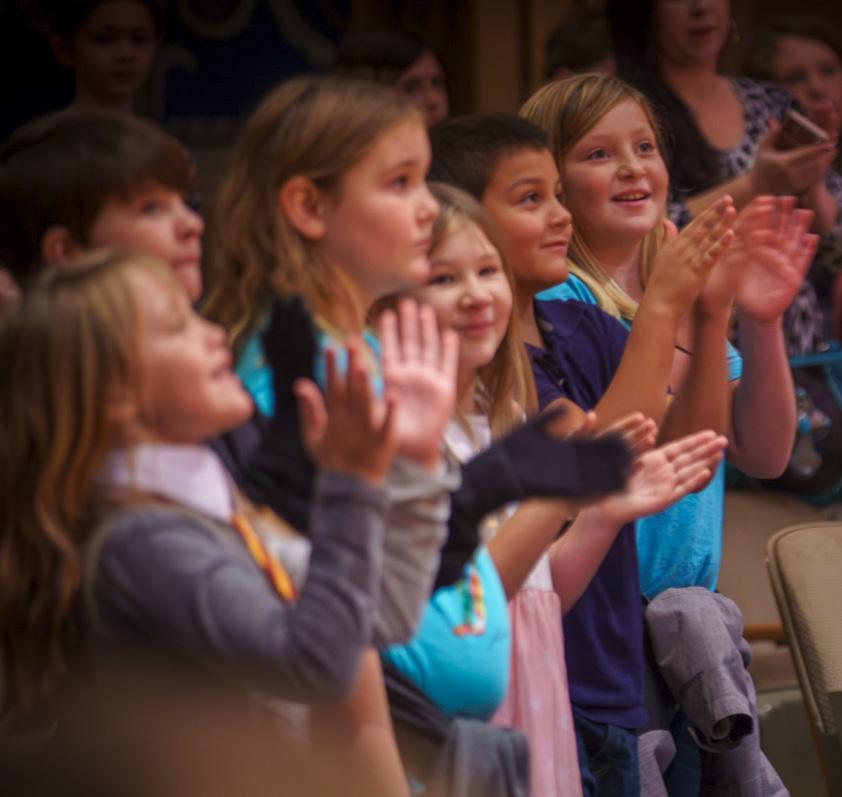

and 5th
5,000 Students attended in 2023!
The Spokane Symphony welcomes 5,000 fourth and fifth grade students from the Greater Spokane area to The Fox Theater. Students experience an engaging concert that showcases the distinctive sounds of various instruments. The program is thoughtfully crafted to align with education curricula and includes interactive classroom activities prior to the concert to enhance the learning experience.
1300 Students attended in 2024!
In collaboration with the Weill Music Institute of Carnegie Hall, the program guides 1300 Students from 20 schools through the art of playing the recorder and vocal performance, utilizing workbooks and instructional materials. With a tiered structure that progresses from fundamental skills to advanced techniques, the program invites educators to join students from 3rd to 5th grade over a three-year journey.
Spokane Symphony musicians made over 200 school visits in 23/24. A talented ensemble makes its way to secondary schools within Spokane Public and Mead School Districts. Musicians dedicate their time to both classroom groups, teachers and individual students.
The Spokane Symphony donates over 1,000 FREE Masterworks concert tickets to students K-12 each season.
Last year, classrooms from 14 schools from Tri-Cities to Whitefish, Montana attended and enjoyed a concert at The Fox!
FASTix and Class Pass Tickets tickets are available by calling the box office at (509) 624-1200.
An all-in-one pass to each of the 9 Masterworks concerts that feature favorite classic masterpieces and stirring symphonies for a killer price of only $40 (that’s only $5 a show)! College Cards can be purchased online or by calling the box office at (509) 624-1200. Student card verification is required for College Card pick up.
Each season, over 150 students learn from our renowned guest artists. These classes are FREE for the public to observe at The Fox Theater.







This season Master Classes will be hosted by Awadagin Pratt on piano in September, Julia Pyke on flute in October and Gabrielle Després on violin in March.
The orchestra performs for 10,000 annually in Liberty Lake Pavillion Park and Spokane’s Comstock Park. For more than three decades, the Spokane Symphony has been a source of joy for countless individuals at our FREE Labor Day Concerts.

JASON MOODY Director of Education and Community Engagement
Would you like the Spokane Symphony Musicians to Play in Your School or Community? Contact Jason Moody at jasonmoody@ spokanesymphony.org

Real suggestions from people like you!
Caralee
Skewers Restaurant, downtown Spokane across from the Fox Theater, is AMAZING!!!
1009 W 1st Ave
Stephanie
The Gilded Unicorn right across the street
110 S Monroe St
Kathi Wild Sage . For sure
916 W 2nd Ave

401 W Main Ave Al Mango Tree
Alissa Highly recommend Cochinito Taqueria!
10 N Post St

Mike We went to Chicken-N-Mo it was delicious!
414 1/2 W Sprague Ave

Todd Doña-Magnolia in the Indigo Hotel is great .
110 S Madison St

Christina There’s a place called Wave Island . Highly recommend
525 W 1st Ave
Sara Nudo was bomb
818 W Sprague Ave
Ron
Sushi Dot Com or Steelhead Bar & Grill . Can’t go wrong with either!
Sushi Dot Com: 430 W Main Ave
Steelhead: 218 N Howard St
Nancy Post Street Ale House
1 N Post St
Jannie Soulful Soups!
117 N Howard St
1242 W Summit Pkwy Laura Baba

Conni Thunder Pie across from the Davenport . Great Happy Hour .
816 W Sprague Ave
Renee Wooden City! Reservations are a must! The peppers are to die for .
110 S Monroe St





SEPT 28 7:30 PM
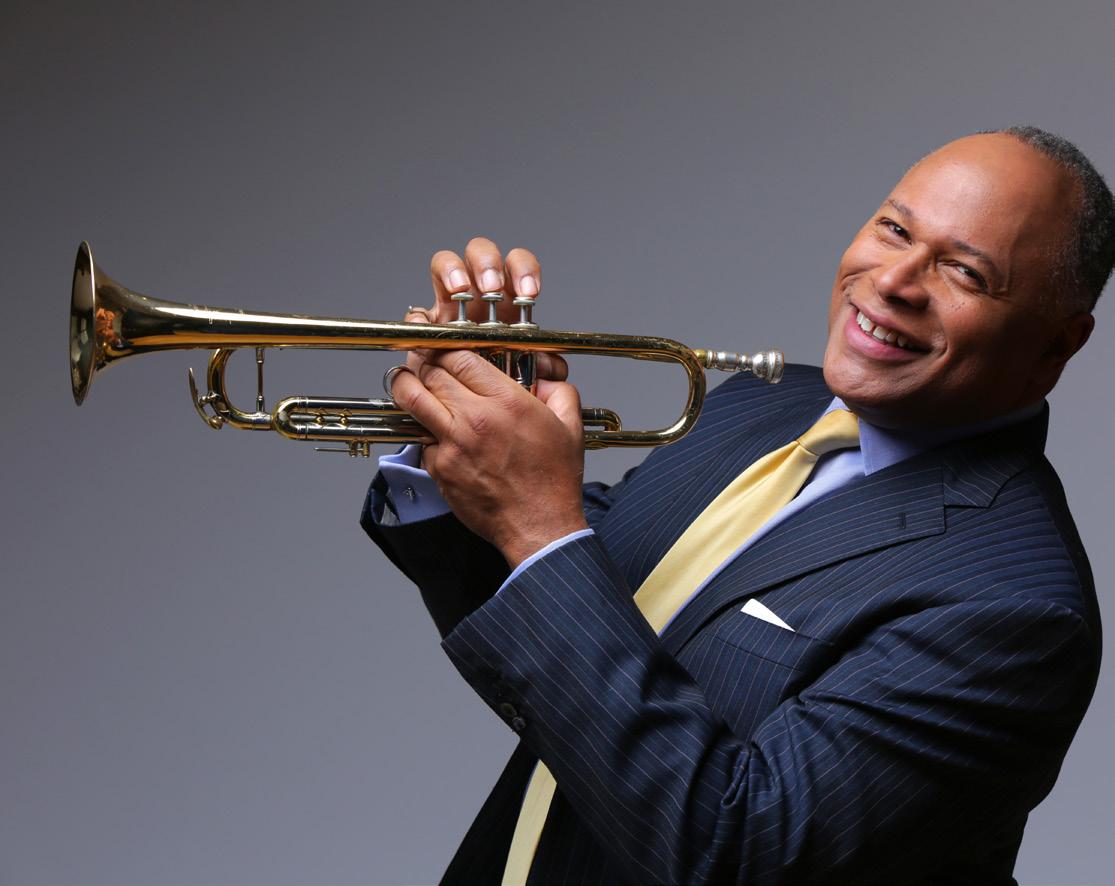
MORIHIKO NAKAHARA CONDUCTOR MORIHIKO NAKAHARA CONDUCTOR


NAKAHARA CONDUCTOR
JINGQI ZHU CONDUCTOR HUGH PANERO VOCALS


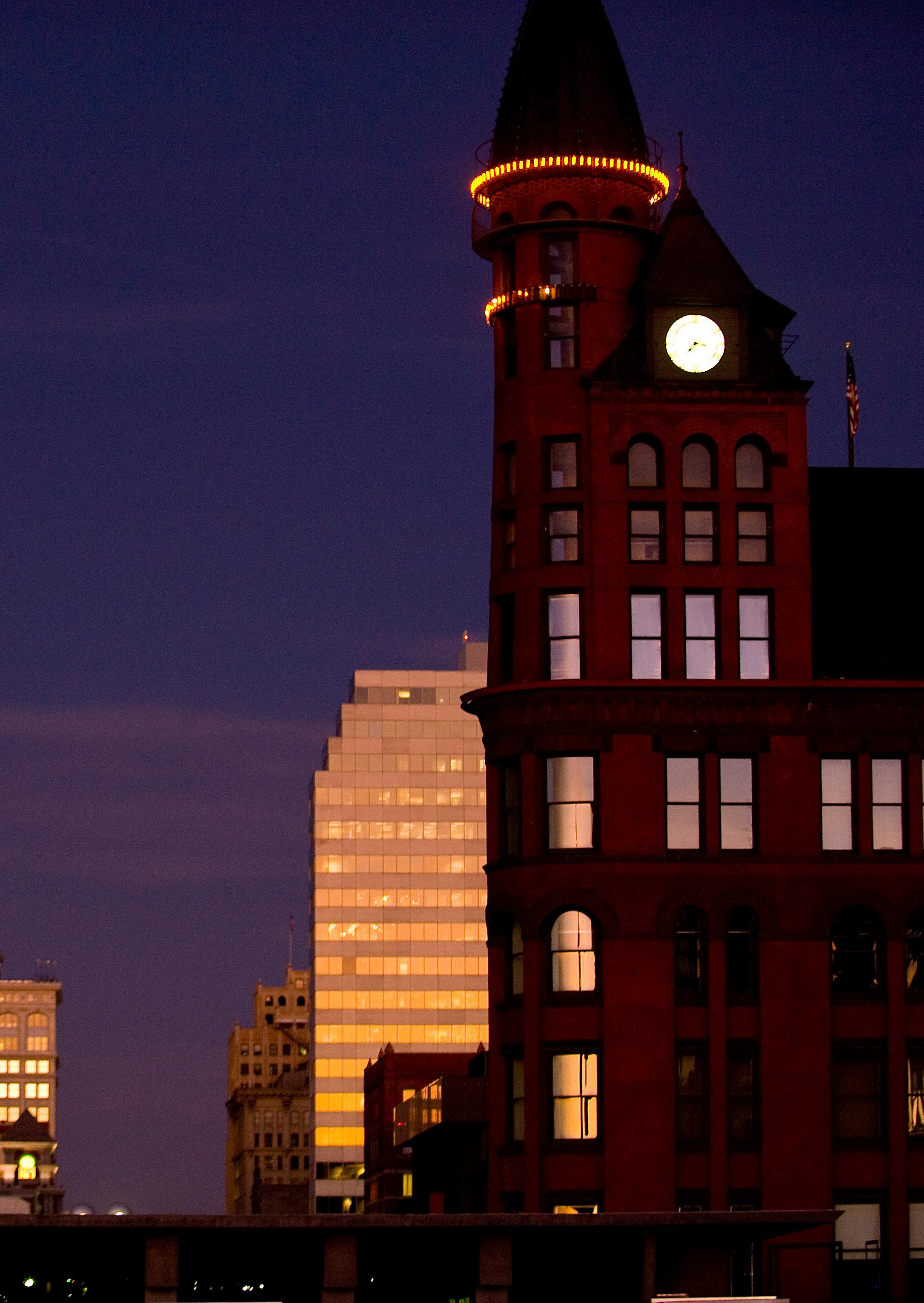



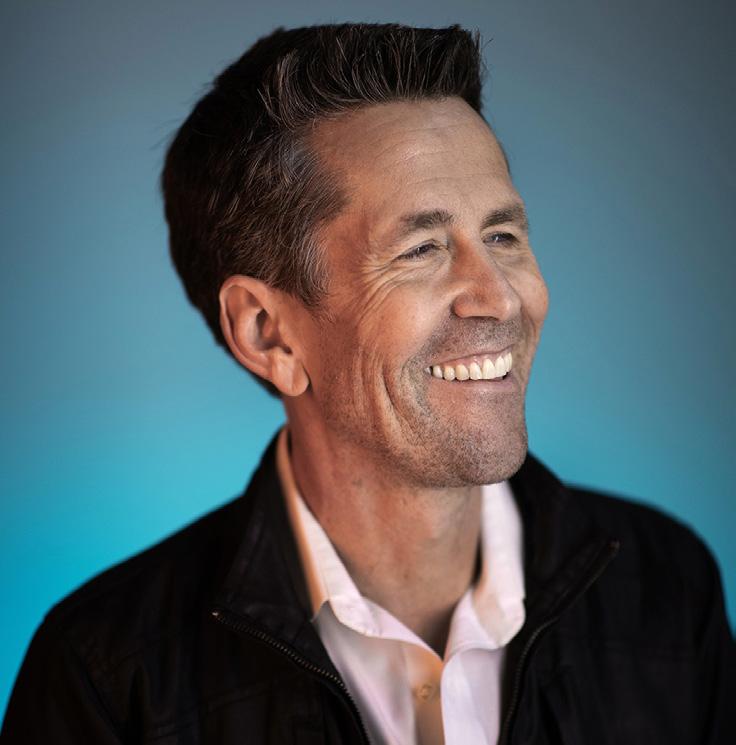














ADMINISTRATION
Russ Lee
INTERIM EXECUTIVE DIRECTOR
DEVELOPMENT
Jan Ager DEVELOPMENT DIRECTOR
Lucy Watmore GIFTS OFFICER
Logan Pintor DEVELOPMENT COORDINATOR
EDUCATION
Jason Moody DIRECTOR OF EDUCATION AND COMMUNITY ENGAGEMENT
Alexandra Rannow EDUCATION OPERATIONS
FINANCE
Weiling Zhu CHIEF FINANCIAL OFFICER
Alexandra Rannow FINANCE ASSOCIATE
MARKETING
Kathy Gustafson DIRECTOR OF MARKETING AND COMMUNICATIONS
Natalia Bawden STRATEGIC COMMUNICATION SPECIALIST
Danny Cordero PHOTOGRAPHER
ORCHESTRA OPERATIONS
Daniel Cotter GENERAL MANAGER
Charles Karschney PRODUCTION MANAGER
Andrew Angelos OPERATIONS & PERSONNEL MANAGER
Emily Nixon MUSIC LIBRARIAN
FOX THEATER OPERATIONS
Brian Ritter
GENERAL MANAGER
Michael Smith PROMOTER SERVICES MANAGER
Connor Jacobson
ASSISTANT GENERAL MANAGER
Joe Rietcheck
FOX STAGE & FACILITIES MANAGER
Bill Curry FRONT OF HOUSE MANAGER
PRODUCTION
Tony Kacalek LIGHTING ENGINEER
Pam Meyer AUDIO ENGINEER
BOX OFFICE
Joshua Schulz BOX OFFICE MANAGER
Diane Fontana BOX OFFICE ASSISTANT MANAGER
Ashe Greenwood BOX OFFICE ASSOCIATE
EVENT STAFF
Angeline Dwyer HOUSE MANAGER
Lynn Pachelli HOUSE MANAGER
Tom Peacock
PARKING ENFORCEMENT






Traditional ticket box offices may be fading away, but the Spokane Symphony prides itself on personalized service through The Fox Box Office. Josh, Diane and Ashe are available to help answer your questions, pick your seats, place your order and everything in between. While we make purchasing tickets online convenient and easy, sometimes it’s just nice to talk to a real person!
Ticket Office Hours:
Tuesday-Wednesday: 10am – 5pm
Thursday: 12pm – 7pm
Friday: 10am – 2pm
Saturday – Monday: Closed
Concert Days: 2 hours prior – 30 minutes after show starts
Ticket Office Phone: 509-624-1200

We are excited to announce a new level of convenience and security for your tickets! Digital tickets are a contactless way to deliver tickets directly to your mobile device using a mobile wallet. It uses a rotating QR code so that you know you have secure, valid tickets as well as reduces counterfeit tickets. Digital tickets can also be easily shared with other members of your party.
No more stress over how to print at home or misplacing your tickets, and no apps are required.
Full Instructions will be found on the website including how to access your mobile wallet, how to access your digital tickets and general FAQs. Plus, our helpful Box Office Staff will be on hand to answer questions.
REMEMBER: Always purchase tickets through our website at spokanesymphony.org or foxtheaterspokane.org, in person at the Ticket Office or call 509-624-1200. Purchasing tickets through any other source can be priced much higher and may not be legitimate.








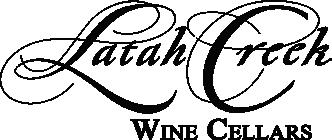












E .S Bergquist Foundation
Mary Ruth Carleton and Bruce Hunt
Bruce and Sandy Colquhoun
In Memory of Lee Cullen
Joan Degerstrom
Sara Duggin
Nancy Evans and Greg MacDonald
Gerard Fischer
Doug and Janet Lambarth
Bruce and Carol Nelson
Michael Ebinger and Britt Ravnan
Carl M Hansen Foundation
George F Jewett Foundation
Sandy and Steven Kernerman
Frank Knott and Rose Marie Quigley
Andy and Liz Law
Dr Philip and Jennifer Ogden
Stephanie Plowman
Michael Sharapata - JLL
Gerry and Bill Sperling


Richard Trudell and Dr Nancy Morrison, PhD
The Spokane Symphony Associates (SSA) is a dynamic group of over 300 volunteers who spend countless hours creating iconic fundraising events that are crucial in supporting a thriving Spokane Symphony. They firmly believe that an exceptional orchestra enhances the quality of life in Spokane.
One of the most iconic Spokane holiday traditions, Christmas Tree Elegance draws in more than 100,000 attendees from around the region. Beautifully decorated, themed trees are displayed in the Historic Davenport Hotel and River Park Square. This is the largest fundraising event in support of the Spokane Symphony, last year raising $462,500.
Dates: December 3 – December 15, 2024
The Historic Davenport Hotel 10AM – 9PM River Park Square 10AM – 8PM
An annual pop-up thrift store that offers vintage curiosities, fine china, jewelry, home decor, collectibles, books, clothing, art, and all those fun knick-knacks you can’t find anywhere else. In May 2024, this event raised $75,570.
Follow the Spokane Symphony Associates on Facebook to stay up to date on more events, news, and opportunities.
The doors are always open to join the Spokane Symphony Associates. Contribute to the enchanting Christmas Tree Elegance event and Upscale Sale, enjoy fun-filled activities, and stay active within a vibrant community. There are 8 chapters all around Spokane.
For more information on how you can and your friends can get involved, contact Bruce Colquhoun at 509458-8733 or online at spokanesymphonyassoc.org

SSA Board of Directors
2023-24:
President
ELIZABETH RAOL
Treasurer
BETSY JOHNSON
VP Membership
BRUCE COLQUHOUN
President Elect
DOUG BELANGER
VP of Development
STEVE CORKER
VP Promotion & PR
SANDY COLQUHOUN
President Advisor
JANET LAMBARTH
VP Education
MARTHA HARVIE
VP Service & Social
KRIS LAMBERSON
Secretary
PATRICIA GALLON
VP Finance
ALLISON SHARP



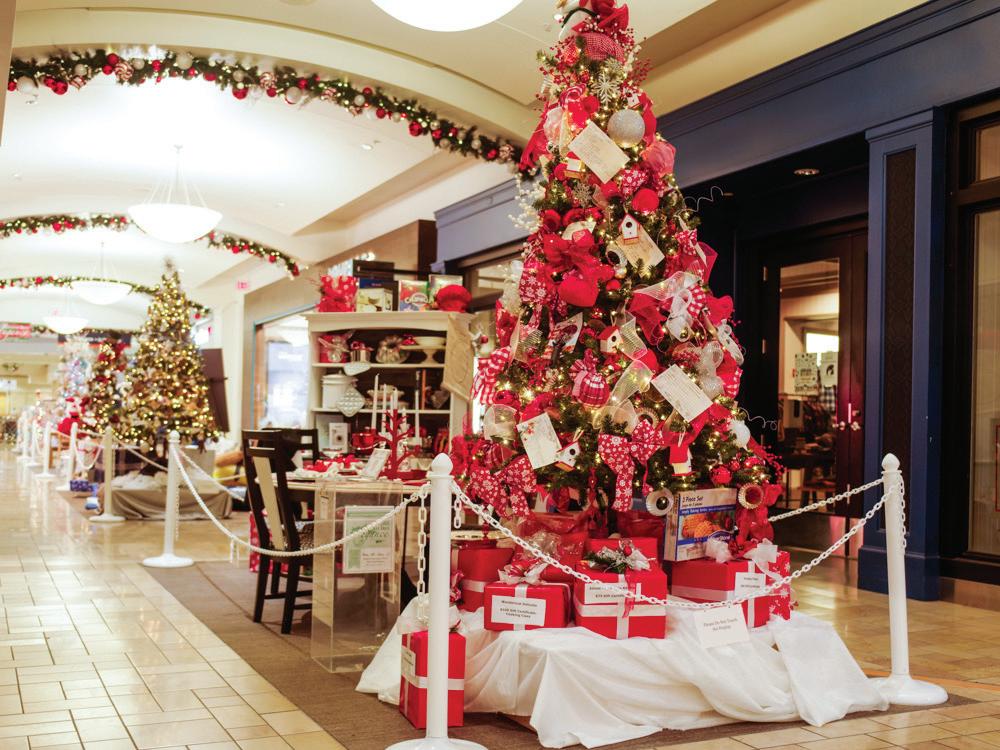
Have you considered leaving a lasting impact by including the Spokane Symphony in your will? In 2023, bequests in the United States grew by 4.8%, reaching an impressive $42.68 billion. These generous gifts came from individuals like you who chose to leave a legacy through their estate plans. By joining the Musical Legacy Society, you are not just making a donation; you are creating a ripple effect that will sustain the arts, music education, and community spirit for generations to come. Your bequest can provide the Symphony with a solid foundation, ensuring its ability to enrich lives through music for years to come.
We currently have $3.2 million in expectancies, a testament to the generosity of our amazing supporters. Please join us in shaping the future of the Spokane Symphony!
Jeanne L. Ager
*Lucille Elizabeth Allert
Walter and *Sally Bonsack
Dave and *Mary Jane Broom
Elisabeth H. Buxton
*Leonard and Helen Byrne
Judith Chastain
Estate of *Firth and *Katherine Chew
Carolyn Clark
Nancybell Coe
Martin and Laura Col
Mary Jane Corliss
*Arthur B. and Joan G. Craig
Lori and Lawrence Cullen
Michael Ebinger and Britt Ravnan
Jan Wigen and Larry Ellingson
Kevin W. Epps
Gerard Fischer
William C. and *Harriet J. Fix
Michael Flannery and Dean Lynch
Estate of *Sue and *Patrick Flammia
Carole and Michael Folsom
Estate of *Lloyd G. and *DeLane Fowler
*Bernard and Anne Fox
Anne Franke and *Michael West

Jay L. Franz
Ron* and Carolyn Gooley
Estate of *Jeannette Harras
Don and Janet Hart
Estate of *Edward Heavner
Dr. Michael and Cathy Henneberry
Estate of *Margaret A. Hinnenkamp
*Wendal and *Virginia Jones
*Dr. Robert and Jean Kendall
Paul and Susan Kennedy
Estate of *Lyman V. and *Cora V. Kinard Frank Knott
*Sherry Knott
James Kuhns
Janet Lambarth
Ann Hurst and Charles Latimer
Martha and William Lee
The Estate of Louis S. and Margery L. Livingston
Spike and *Molly Lynch
Joel and Joy Moore
Diane DeFelice and David Nelson
*Dr Arthur F. Noskowiak
Estate of *Robert Ogden
Estate of *Mary Olson
John Patrouch and Linda Jean Hartman
*Al and Pat Payne
*Ruth S.H. Pearson
Estate of *John A. and *Janet F. Peterson
Paul and Bridget Piper
Lucretia L. Pladera Fred Radebaugh
Lynne and Ben* Ridlon
A. W. and Vivian
Louise Saylor
Billie M. Severtsen
Garry T. Shea
Charles and Cathy Simon
*Richard and Connie Stacey
*Jean and *J. Herman Swartz
Pat and Kirk Thomas
Ms. Phebe Thompson
*Betty Barker Tiffany
Dr. Darlene A. Townsend
Richard W. Trudell & *C. Darlene Trudell
Harriet N. and *Sam Van Wyck
*Elizabeth M. Welty, M.D.
*Patricia Wenke
Lura V. Whitham Estate
Ruth and Dan Wimberly
Jeannette Wee-Yang and Daniel Yang
Anonymous (3)
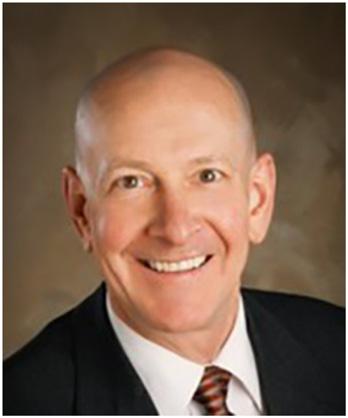
As a proud member of the Spokane Symphony’s Musical Legacy Society, I have experienced firsthand the simplicity and profound impact of including the Symphony in my estate planning. I chose to designate the Spokane Symphony as a beneficiary of my retirement account—an action that was easy to execute online. This decision not only ensures that a meaningful portion of my estate will continue to support the Symphony but also allows me to contribute to the enduring legacy of an organization that has been a significant part of my life since childhood.
The process of becoming a Legacy Society member and making the Symphony a beneficiary is designed with ease in mind. It requires only a few steps, which can be completed online or with the assistance of a Symphony representative. This accessibility encourages all who cherish the Symphony to consider how even a simple act of planned giving can leave a lasting imprint on our community’s cultural future.
In addition, I contribute to the Spokane Symphony annually, which is very rewarding as well. Arranging these gifts is also easy and can be done online or with Symphony staff assistance.
Officers
President: MATT EWERS
Vice President: DOUG BELANGER
Treasurer: JACK FALLIS
Secretary: CATE MOYE
Members DAVID BROOM
GERARD FISCHER
JEFF SNOW
Beyond traditional monetary donations, the Spokane Symphony welcomes a variety of non-cash contributions. From stocks and securities to planned estate gifts, your support can take many forms, ensuring the enduring legacy of music in our community.
If you are 70 ½ years of age or older, you can give up to $105,000 from your QCD. Once you reach 73, you are required to take an annual Required Minimum Distribution (RMD)
Name the Spokane Symphony or Endowment as your designated beneficiary of life insurance policy, IRA or DAF.
A sustainer of the Spokane Symphony is a true champion of the arts, making regular, recurring donations that keep the music alive and thriving. By contributing monthly, sustainers provide a steady and reliable stream of support that covers everything from artist fees and venue costs to educational programs. This consistent backing is the lifeblood of the symphony, enabling it to continue to deliver breathtaking performances and inspire audiences year-round.
As a lifelong lover of the Spokane Symphony, I wanted to find a way to support this incredible institution consistently.
Becoming a monthly sustainer was the perfect solution. Not only do I get to contribute to the Symphony’s continued success and enjoy the beautiful music it brings to our community, but I also found a clever perk. By setting up my monthly donations to be charged to my credit card, I accumulate airline miles throughout the year. This way, I support the arts I cherish and earn a free airline ticket annually. It’s a win-win!
Kent Burnham Monthly Sustainer
We are happy to collaborate with you and your trusted advisors. Please contact Jan Ager at 509-990-1645


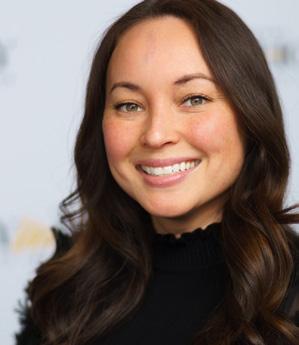









We extend our heartfelt gratitude to the ever-expanding community of supporters who generously contribute to the Spokane Symphony, Fox Theater, and the Spokane Symphony and Fox Theater Endowment Fund. This donor list reflects the cumulative giving history over a 12-month period. All donations are for the fiscal year 2024, spanning from July 1, 2023, to June 30, 2024.
FORTISSIMO! ($100,000+)
In Memory of Colleen Anderson
*Leonard I. and Helen Byrne C
Idaho Central Credit Union
Spokane Symphony Associates
Spokane Symphony and Fox Theater Endowment
CRESCENDO
($50,000-$99,999)
City of Spokane-ARPA
PERFECT PITCH
($20,000-$49,999)
Avista Foundation
Clearwater Paper
David and Vernice Cohen
Joan Degerstrom
Sara Duggin
Future Song Foundation
Hagan Foundation
I.S. and Emily Fetterman Foundation
Johnston-Fix Foundation
Frank Knott
Spokane Arts STCU
Anonymous (2)
PLATINUM BATON
($10,000-$19,999)
Lauren Armstrong
James and Nancy Barthelmess
Doug and Gail Belanger
John and Christeena Blasen
Kay Brightman
Michael Ebinger and Britt Ravnan
Patricia Gorman Ewers C
Ann Fennessy and Robert Maixner C
George F. Jewett Foundation
Robert E. Gibbs
Dr. George and Lila Girvin
The Heaton Family
Arsen and Daria Kitch
Russell and Deborah Lee
Dr. William and Mary Murphy PotlatchDeltic
Raymond Family Foundation
Barry and Kathy Rettkowski C
Dr. Jeffery and Julia Snow
The E. S. Bergquist Foundation
Phebe Thompson
Jeff vom Saal
Harriet N. and *Sam Van Wyck
GOLD BATON
($5,000-$9,999)
Joan and John Anderson Artsfund
Chris and Christine Ashenbrener
Dr. Bassem Bejjani
Kent R. Burnham / V
Elisabeth H. Buxton
Carl M Hansen Foundation
Mary Ruth Carleton and
Bruce Hunt
Bruce and Sandy Colquhoun
Sunny and Bob Cook
Elizabeth A. Cowles and James L. Meyer
Jay L. Franz
*Ron and Carolyn Gooley V
Harold Fix
Hal Hunt and Claudia Smith
Irwin Family Fund
JLL
Jack and Felicia Kendall
Andy and Liz Law
Danko and Dubravka Martincic
Multicare Health System
Carol and W Bruce Nelson
William and Paula Nelson V
Otto and Denny Schatz
Ginny Schuyler C
Ruth K. Seignemartin
Bernard Sheldon and Mary Jane Corliss
Gerry and Bill Sperling
The Welty Foundation
Richard Trudell and Dr. Nancy Morrison
Lyle and Kathy Wendling
Joe Wessman and Dr. Debbie Maurus
Mr. Joe Organick and Dr. Karen Wohlen
Fritz Wolff
Neil and Dawn Worrall
MAESTRO’S CIRCLE ($2,500-$4,999)
Dale Boercker
Walter Bonsack C
Carolyn Clark
Nancybell Coe
Stacey and Anne Cowles
Matt Ewers
Mike and Vicki Frucci
Stacey and Anne Cowles
Don and Janet Hart C
Harry H. and Inge S. Hendron
Meredith Jobe
Dr. and Mrs. R.N. Kleaveland
Latah Creek Wine Cellars
Drs. Pierre P. Leimgruber and Alina I. Peffer
Spike Lynch
Rita and Ron Mickelson
Barbara and William Morkill
Carla M. Nuxoll
Dr. Philip and Jennifer Ogden
Jerad and Katie Park
H. Laird and Shawna Parry
Georgene R. Patten
Gilbert and Beth Rossing
A. W. and Vivian Louise Saylor C
Donald Schaefer
Sheila Sloan
Grant and Lelia Smith
Marcia M. Smith
SRM Development, LLC
Connie M. Stacey
Ed and Amy Walker
Peter and Karen Wildman
($1,000-$2,499)
Rev. Dr. George and Jan Abrams V
Tom and Helen Allerding
Gail and Dex Amend
*Dr. Wayne L. Attwood
John and Sindra Barber
Cary and Kay Bass
Kathy and Bruce Bixler
Frances H. Brewer
Cathy Brown
Krista Brown
William and Judy Camden
Bridget and P.J. Carstens
Michael and Anne Chamberlain
V Monthly Sustaining Donor
C Endowment Donor/MLS or Musical Legacy Society
Education Donor
* Deceased
Dave and Mari Clack
Joe and Jane Clements
Ronald Cocchiarella
Drs. Carey and Cohen
Commercial Creamery Company
Jane Ellsworth and William Conable V Lou Corones
*Dr. Arthur B. and Dr. Joan G. Craig
Ashlee Cribb and Walter Woliver
Rodney and Darlene Croteau
Randy and Linda Crowe
Matthew Dudley and Lea Conner
Sandra Duffy
John Eisenhauer and Jil Strate V
Peter and Susan Fern
Gerard Fischer C
Dr. Robert and Meryl Gersh
Judy Grollmus V
Bart and Lindell Haggin
George Halekas and Patricia Moberly
Judy Hamel
Arthur Harlow and Mary Giannini
Faith Hayflich and Charlie Boettcher
Mary Heath
Dr. Michael and Cathy Henneberry
Holloway Family Foundation
Gary and Barbara Hordemann
Lori and Dan Houk
TJ Houk
Suzanne W. Hoyle
Karen J. Creveling-Hughes and Joel A. Hughes
Valerie Hughes
Stephen and Jean Johnson
Jim and Elouise Johnson C
Dr. Thomas A. Kearney,and Sharon A. Fischer V
Steven and Susan Kelsch
Selena and Myles Kennedy
Cheryl D. Kingen
Bill Kingman
Jim Kolva and Pat Sullivan
Bill and Pat Lamphere
Anne Lauderbaugh
Dr. Robert and Marilyn Laugen
The Estate of Louis S. and Margery L. Livingston


The Estate of Betty and Scott Lukins
Malcolm Manwell
Susan C. Mattoon
Dave McGann
Mary Beth McGinley V
Kathleen L. Meyer / C
Joel and Joy Moore
Mounsey Family Foundation
Dan Muhm and Cathy Nemmert
Carole L. Rolando and Michael J. Myers
*Nicholas and Mildred Ninos
Susan Nunes
David and Karen Parsons
Carla O. Peperzak
Dr. John and Ashley Peterson
Caryl Poshusta
Thomas and Sallye Prenger
Lunell Haught and Robert Pyle
Fred Radebaugh
Dick and Trudy Raymond
Dr. Stephen and Sherilyn Renner
Gerald and Maureen Ritter
Sharlene Rivers V Jerry Rosen
Laurelyn Rothrock
Judy S Sawyer
Tom and Mary Pat Schemmel
Selinger Shone Foundation
Gerald and Patricia Sittser
Spokane Bike Swap And Expo
Brent Stanyer
Blair and Susan Strong
Steve and Linda Swartley
Kathryn L. Tolin and Bruce A. Bailey
Tom and Glea Trulove
Doug Vilhauer and
Bobbie Domonouski
Rick and Diana Wilhite
Peter and Gay Witherspoon
Dave and Millicent Roberts Anonymous
($500-$999)
Karen J. Bart
Frank Beattie
Ron Benfield
Richard and Maureen Boutz
Mary Jane and Dave Broom
Curtis and Margaret Chambers
Pat and Nancy Chase
Virgil and Lyn Dedas
Kim and Anita Eccles
Jan Wigen and Larry Ellingson
David and Sara Ensor
Thomas and Patricia Fairchild
Dr. Robert Farner
Carla and Tom Fawcett
Darlene Fisher
Art and Nancy Flagan
Kathy Golden
Yvonne Goodwater
Terri Gruber
Betsy and Doug Hammond C
Michael and Bailey Haugen V
The Hendershot Family
Charitable Fund
Linda and Roy Hooten
Jim and Sandy Ivers
Janet and Robert Johnson
Julia Jones
Melodee Jones and Robert Hyslop
Thomas L. Kasson
Paul and Susan Kennedy
Rachel and Larry Kristianson
Don and Charlotte Lamp
Sean LaSalle
Donald and Haideh Lightfoot
Greg MacDonald and Nancy Evans
Cynthia and Kyle Malmquist V
Gayle McCutchan
Colleen and Jacob Meighan
Virginia and John Moody
Gary and Cynthia Munson
Diane DeFelice and David Nelson
Joann and K. V. Nelson
Doug Orr
Marion and James Park
Karen Parsons
Mary Perry
Margaret Phillips
George and Virginia Potts
Harley and Melanie Reckord
Michael Robinson and Jacquelyn
Dibble-Robinson
Marcus Roeder
Michael and Susan Rudd
Nancy and James Schoepflin
Jerry Searfoss
Dr. John Paul and Sharma Shields
Steven and Pam Silverstein
William H. and Pamela Small
Peggy Springer V
Lori Steiner V
Ken and Lee Swedberg
Judith and Gerald Titus
Bernie Toutant
Maria Trunkenbolz
Cheryl and Royce Van Gerpen
Louis Vogel and Anne Arguinchona-Vogel
Walker Construction, Inc.
Irene Weir
Don and Shirley Whittaker
Sally Winkle V
Annis G. Young
Anonymous (3)
($250-$499)
John Anderson and Alberta Brassfield
Zach and Sim Arms V
Judy and Doug Beane
Dr. Julie and Mr. Rick Biggerstaff
Muriel Blevins
Bill and Kate Bradley
James Brandmueller
Dr. Robert and Mary Elizabeth
Burroughs Family Fund at Innovia
Diana and Bill Butland
Bruce Carpenter
Jana Sue Carter
Keith Congleton and Kathy Hubbard
William and Cynthia Corrick
Kevin and Kay Dixon
Sherry L. Ennis
Susan Eugster
Ceanne Evans
Sharon Fairchild
Sandra Fink
Paul Fish
Karl and Suzanne Fleming
Paul and Shirley Galli
Richard and Judith Gammon
Lawrence and Patricia Garvin
Dr. and Mrs. Richard G. Gower
Suzanne J. Grainger
Jody Graves
Kate Loftis Hamilton
Darren Hand
Dr. Mike and Christie Hinnen
Manny and Vange Hochheimer
Paul and Judy Jaremko
Tom and Ruth Ann Johnson
Brian Jonas
Shari A. Kain
Dr. Ken and Marie Kapstafer
Masako and Maurice Keeler
Sandra and Steven Kernerman
Gudrun Klim
Gary and Nora Klingsporn
Peggy and Steve Koehler
Stephen and Lisa Kuhar-Pitters V
KNona Liddell, Ph.D.
Kevin Littlemore
Sybil Alicia MacDonald
Todd Maddock
Sara Maleki
Gary and Lisa Marks
Dave and Bobbie McGann
Jeta P. McKillip
Susan M. Morris
Bill and Susan Mulvihill
Katherine V. Myers
Diana Ohlson
Dan and Susan Ott
Robert and Jean Panther
Elizabeth and Jack Pearce
Pamela Randolph
Dee and John Rodgers
Lance Rucker
Jack Russell
Brooks C. Sackett
Robert Scheidmer
Bob and Sue Schneidmiller
Michael and Lori Sharapata
Ron and Sherri Thies
Anna Torma
Richard R. Wagoner
Daniel Yang and Jeannette Wee-Yang
Nicholas and Karen Warrick
Dave Weatherred
Douglas Wester
Ms. Jennifer Wheaton
Larry and Mary Ann Winters V
Judi and Donald Young
Linda Siverts and Tony Yuen
Anonymous
($100-$249)
Deral and Carol Adams
Martha and James Ahrens
Terry Arai
Laura Arksey
Maria Barac
Kay Barmore
Adam and Linda Bartholomew
Brynn Beals
Nick and Sue Ann Beamer
Kathleen W. Bentley
Brad W. Blegen
Barbara Bonino
Frank and Sharon Bouten
Mark and Sharon Bowman
Philip Boyer
Monica Bramble / V
Penelope Brown
David and Patricia Brown C
Scott Campbell
Barb and Mike Cantlon
Ashley Cantlon
Lee Chaney
Jessie Norris and Barry Chapman
Roger and Kathleen Chase
Joe Chrastil and Jean Ingebritsen
Margaret W. Clark
Jeremiah Clinton
Martin and Laura Col
Sharon and Joe Conaty
Laurie and Tom Connolly
Jennifer Cook


Roger and Judy Cooke
Ann Quinn and David Cooling
James A and Carolyn E Brown
Cooper
Andrea Crumpler
Dana Dalrymple
Ronald Daniels
Joan De Groot
David Dierdorff
Dick and Sherrill Dietz
Ivan Dremov
Jim and Sue Els
John Empsall
Jack Fallis
G. Stanley Fergin
Michael Flannery and Dean Lynch
Blake Folden
Dr. Merry A. Fougere
Friday Musical Club
Alex Ganea
Woody Garvin
James Gerding and Heidi Pouley
Jenna Gigstead
Benjamin Gish
Leon and Annie Green
Linda Greene
Greg and Margaret Presley C
Kelly Grieves
Julie and Mike Haines
Kenn Hamm
Cynthia and Michael Hauser
Eric and Corinne Hensley
Gary and Vicki Van Heuvelen
Joe and Sharon Hindman
Jean Hodges
Beth Hodgson
Gary and Sharon Holmes
Doug and Susan Hood
Serban and Raluca Ionescu
Robert Jackson
Jerry and Tamolin Leonard C
Rosa Johansen
Richard and Karen Johnston
Jerry and Julia Jose
Peter and Diane Joss
Blue Moon Garden & Nursery
Dan and Nancy Kessler
Karen Gendron and Dean Kiefer
Kurt Kilayko
Mike and Clare Kobluk
Diana Koorkanian-Sauders / V
Janet Krovoza
Ed and Jann Leppien
Mel and Sheila Leskinen
Dr. Edward and Kay Lester
John and Laura Lloyd
Joe Lotrario
Holly Love and Pam Glass
Ron and Judy Lugone
John and Keirsten Lyons
Scooter and Dan Mahoney
James and Susan Malm
Jane Mark
John Marshall and Lynne Feller-Marshall V
Patricia Marvel
V.A. Maxwell
Janie McCaslin
Michael McKay and Simone Ramel-McKay
Linda R. Meyer
Richard and Karen Meyers
John and Sue Middaugh
Arlin and Judith Migliazzo
Camilla Mounts
Don and Marilyn McNally
Joseph and Alison Nowakowski
Leonard Oakland
Donald Oakley
Jean O’Dell
Carol Overman
John and Diane Packard
Bruce Pennell
Chris and Norma Petersen
Stefanie and Bruce Pettit
Betty and Mike Pontarolo
Michael and Sandra Povich
Kate Quinn
Dave Remington
Ray and Marilyn Riches V
John and Shirley Riley
Dr. Mary F. Roe
Craig and Valerie Rongey
Neva Rotz
John Rudman
Kathy and Steve Sackett
Robyn Samuels
Dr. Judith Schoepflin
Del Schwisow
Jay and Kristi Sciuchetti
Billie M. Severtsen
Patricia H. Sexton
Richard and Helen Ann Shanley
Gregory Sharp
Bill Shugg
Sharon Simons
Bob and Pat Skattum
Salli and Jim Sledge
Dr. Gary and Sarah Smith
Gregory Smith
Brian Soth
Spokane Chapter American
Guild Of Organists C
Spokane Music Teachers Association
Spokane Symphony Associates
Bernstein Chapter C
Dacotah Spurgeon
Richard and Karen Steele
Stickles Family Fund
Liz De Niro and Paul Swetik
Lynn Terwilliger
Alice Thomas
Molly and Walter Thompson
John Toccalino V
Marilyn Trail
Barbara May Tuttle
Debra Van Slyke
Daniel and Tina Varey
Constance Nelson and Robert
Weaver
Vicki Wieber
Wende Wilber
Brent and Sue Wilcox
John and Sheree Wilkinson
Burma and Richard Williams
Jennifer Winson
Mateusz and Dawn Wolski
Gary and Sharon Zentzis
Anonymous (3)
Mark Abrams
Jeanne L. Ager
Brian Alexander
Marcia Amend
Bruce Anderson
Dena Angelos
Karin Brocksbank
Mary and Lawrence Bryan
Hans and Janet Bynagle
Mary Louise Cameron
Thomas C. Caswell
Eric Christiansen
Carol Currie-Hannah
Kelly Dittmar
Michael and Janelle Dobson
Gary Edighoffer
Francine S Evans
Erin Foster
James Fox
Ellie Getchius
Ernie and Venera Gilmour
Karl Grotenhuis
Nita Hamilton
Molly Hannan
Lucille Hanson V
Ellen Hoffman
Doris Holdaway
Bob Hustrulid
Jean Jalufka
Ron and Debbie Johnson
Amy Johnson-Colwell
Christie and Rick Jones
Keith and Pam Kager
Stephanie Klein
Darin Klein
Daniel Lannigan
Andrew Lipsker
Janelle McCabe
Will Malone
Garry and Annie Matlow
Scott and Barbara McArthur
John McDowell
Sarah McMenamin
Christine Morel
Eteri Byazrova and Yuri Morozov
Kathy Morris
Rev. William J. Murphy
Dian Nelson C
Bill and Julia Nesbitt
Jill-Lynn Nunemaker
Holly Pena
Alan and Patricia Perlman
Kyle and Mary Peterson
Charles Peterson
Chuck and Donna Pierce
Molly Prenger
Kenn Priebe
Martha Raske
Lois Redmond
Harley W Rhodehamel III
Scott Rigden
Bernie Rodseth
Janet Schmidlkofer
A.J. Sheredos
Dan Siddoway
Stephen and Judith Spelman
Andrea Srulovitz
Fred and Karen Stahl
Carolanne Steinebach
Judy and Phillip Stephens
Mark Stinson
Howard and Rita Stoess C
Sharon M. Straub
Dr. Patrick and Lynn Tennican
Robert Terleck
Mary Thogersen
Ha Tran
Wallace and Lynn Volwiler
Gay Waldman
Jill Walicki
Taryn Ward
Ann Warrington
Anne Claire and Z. Harry Whitley
Mike and Carol Wilson
Mary Winkes
J. A. and Marie Wyatt
Anonymous V Monthly Sustaining Donor C Endowment Donor /MLS or Musical Legacy Society
Education Donor
* Deceased



